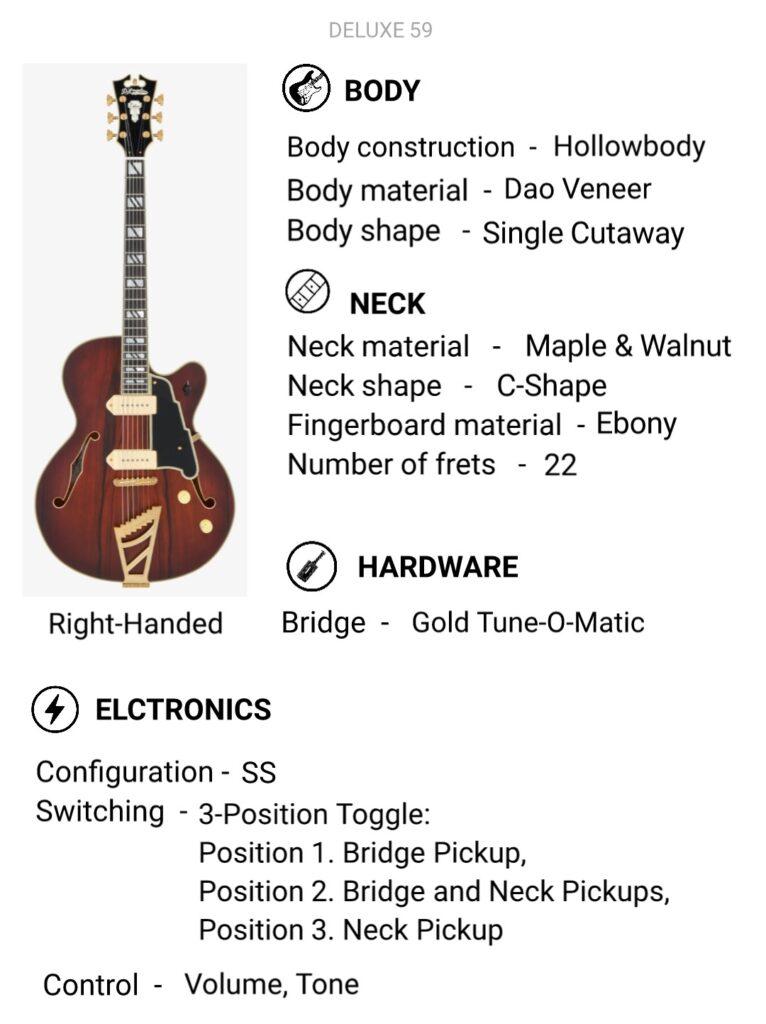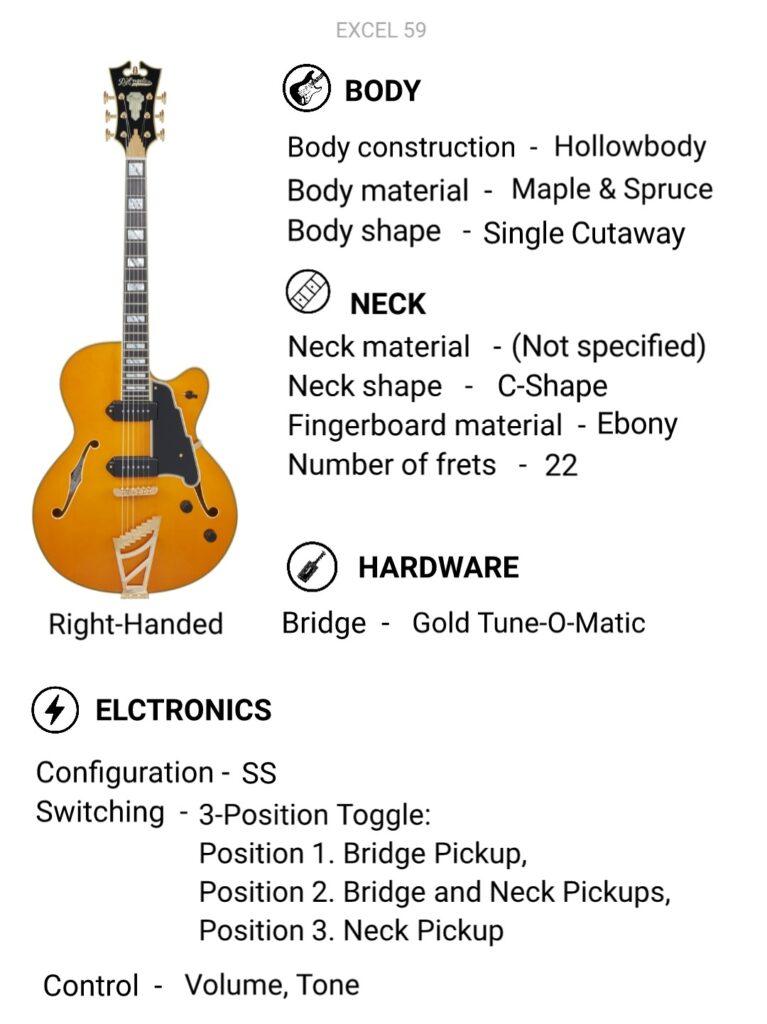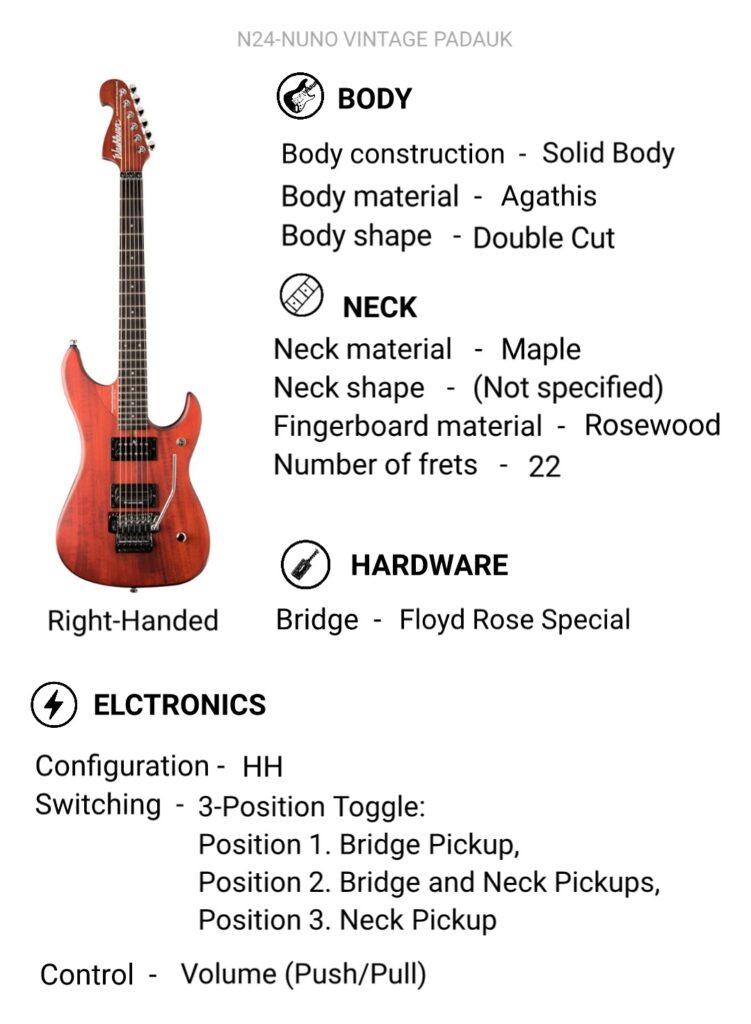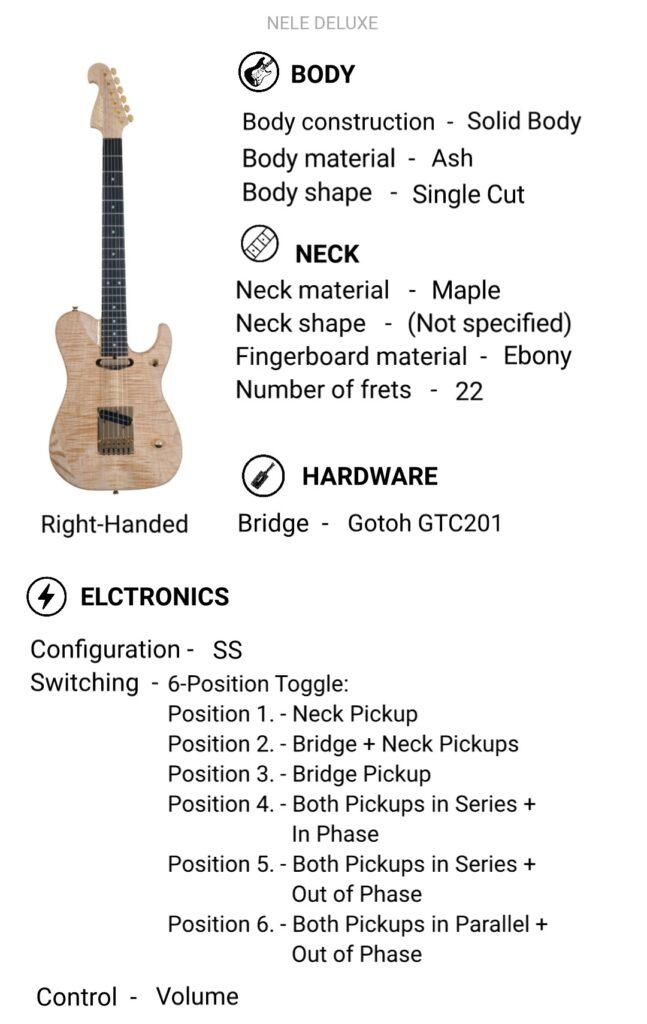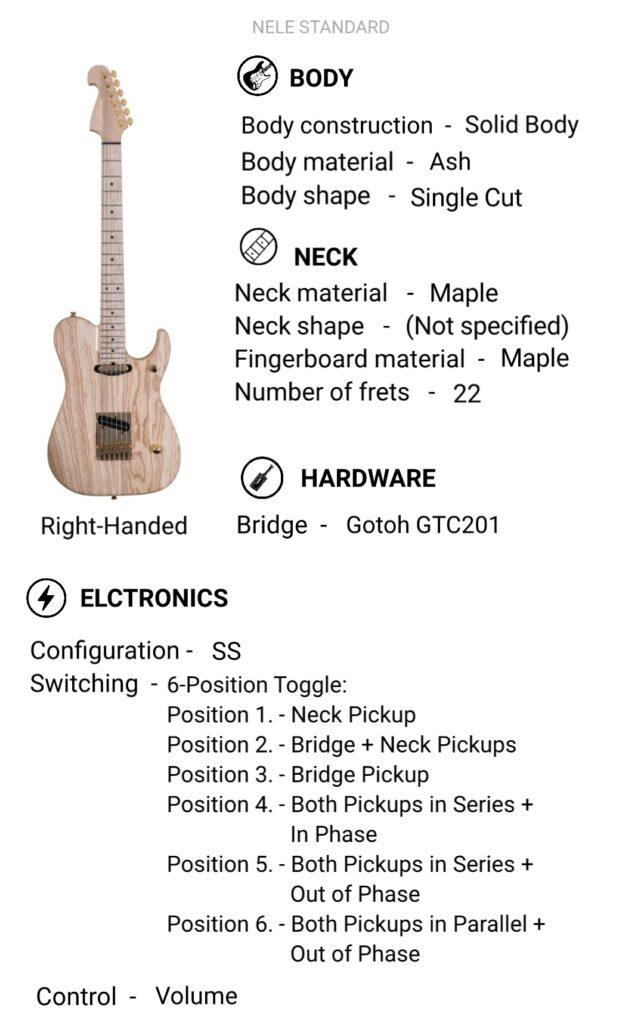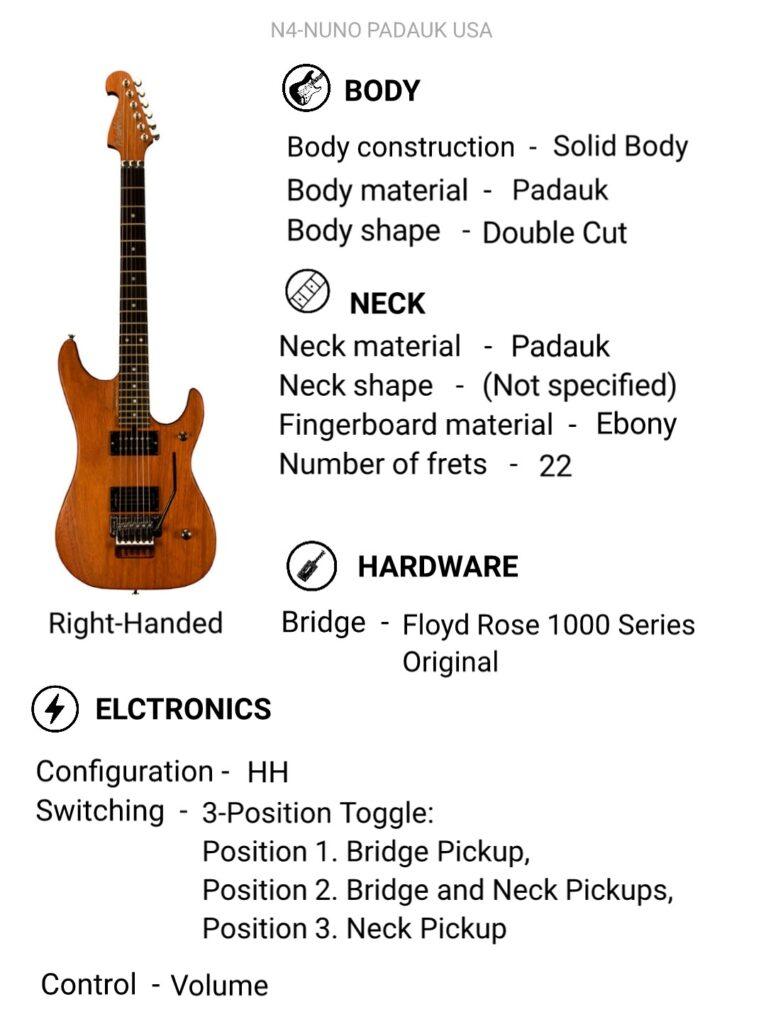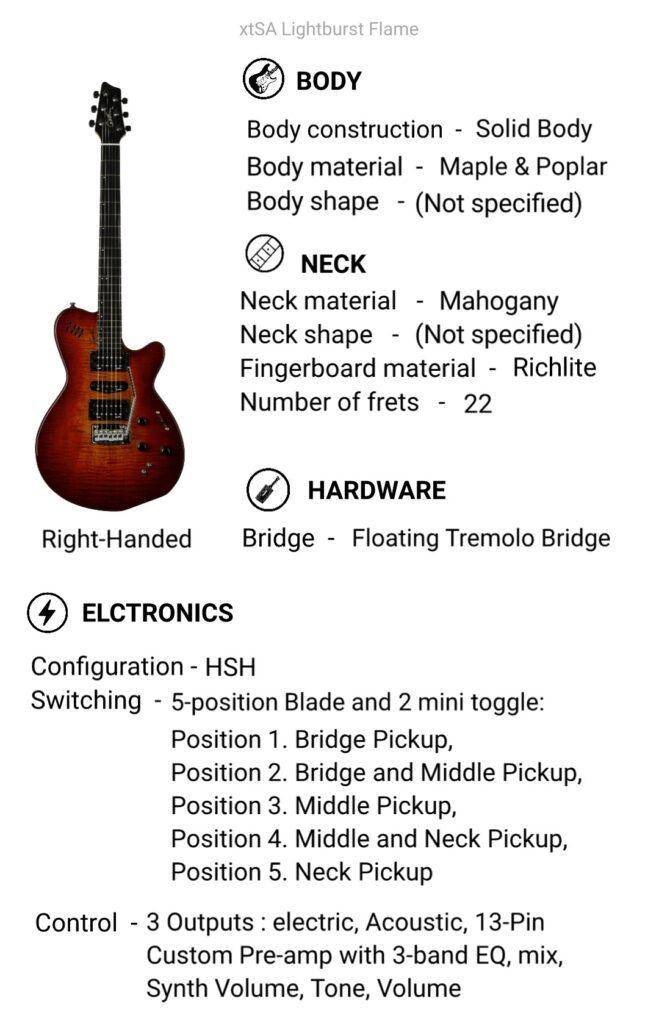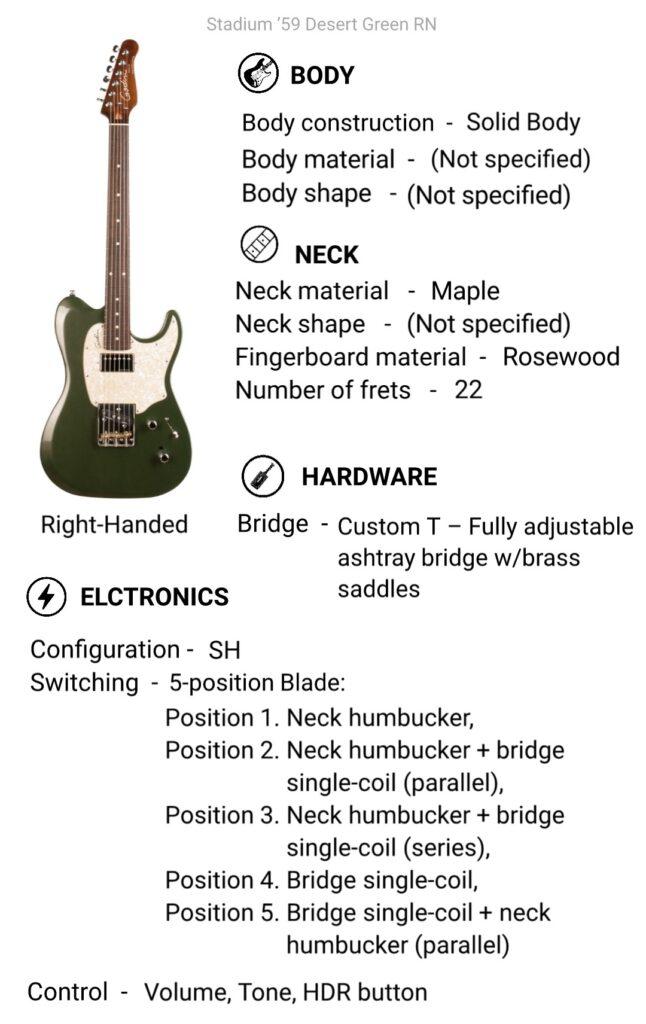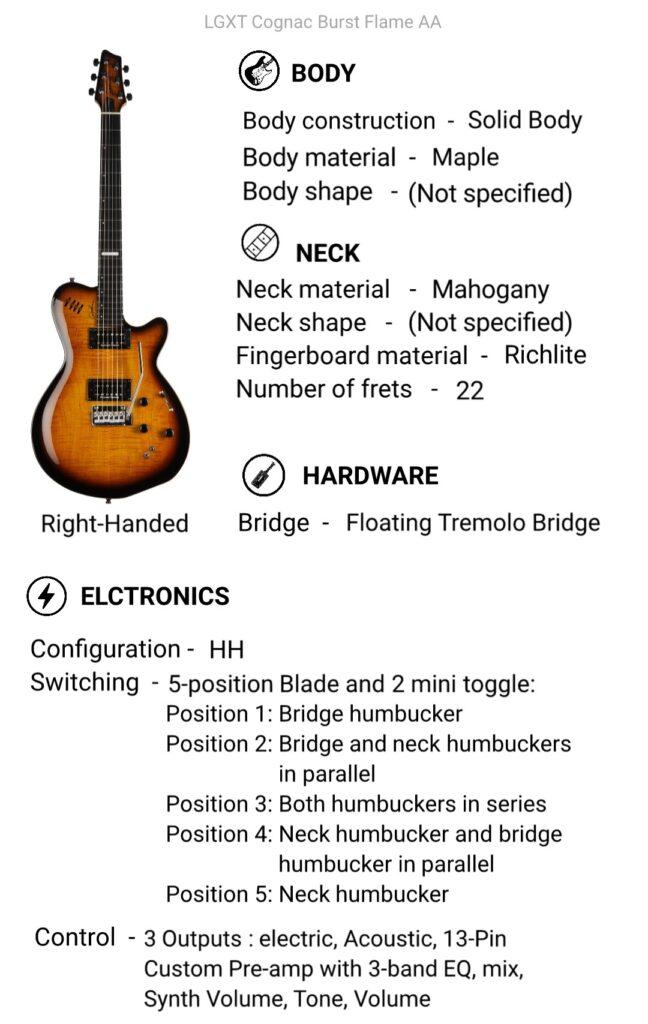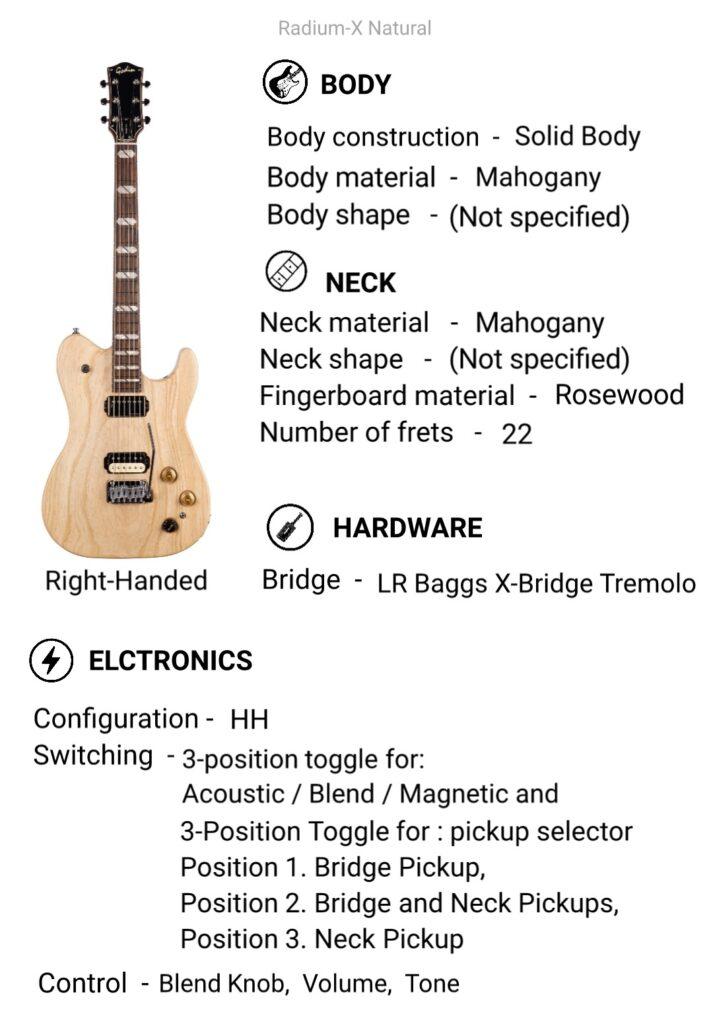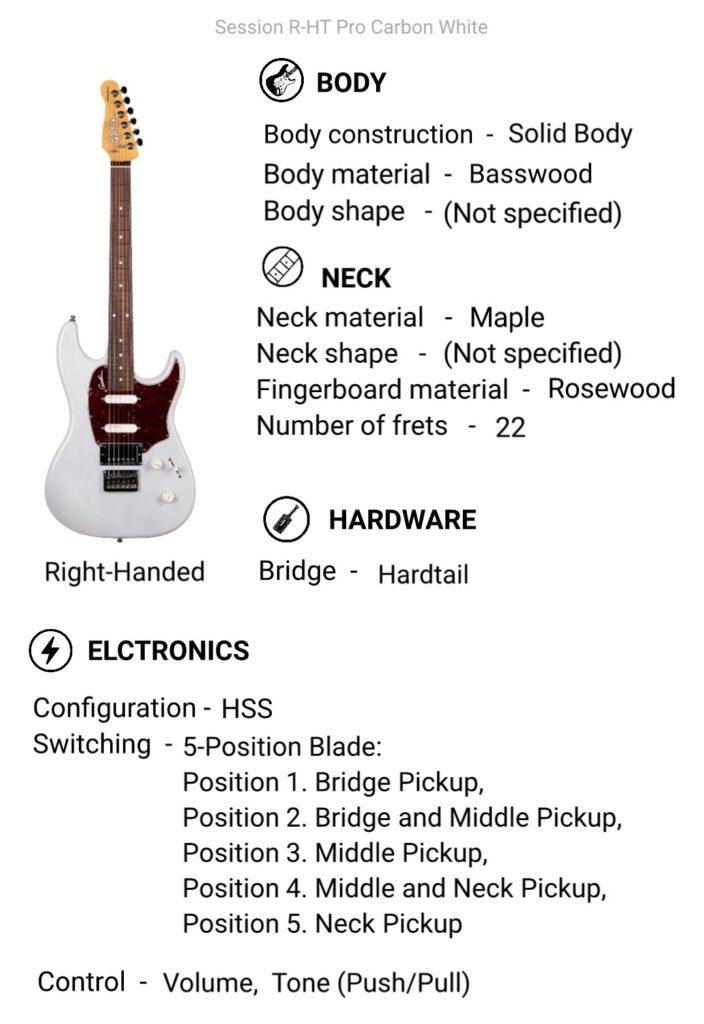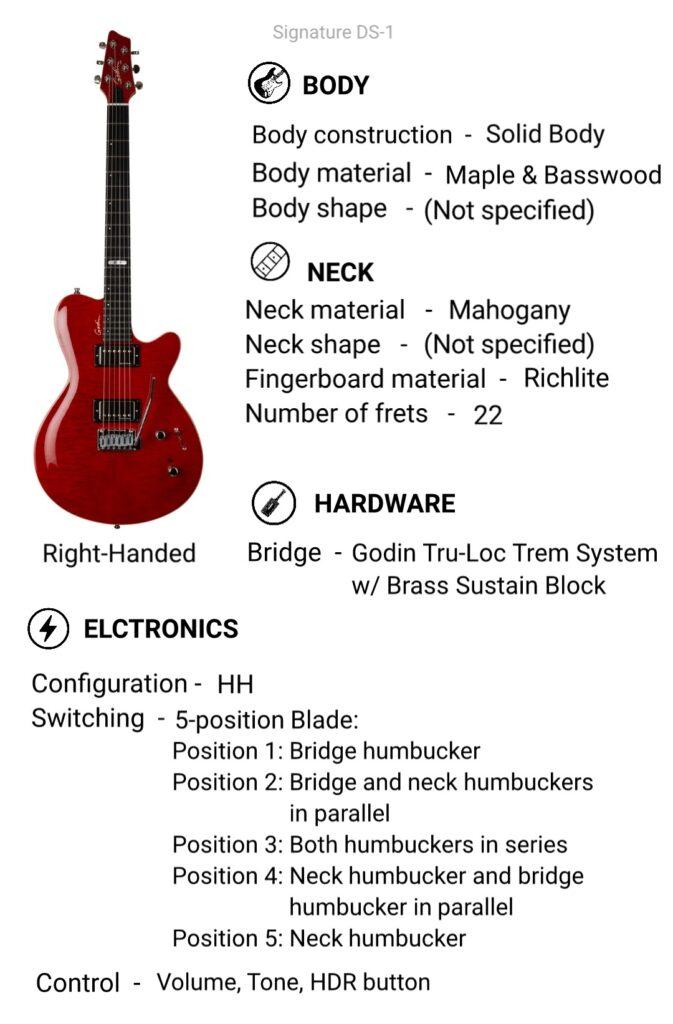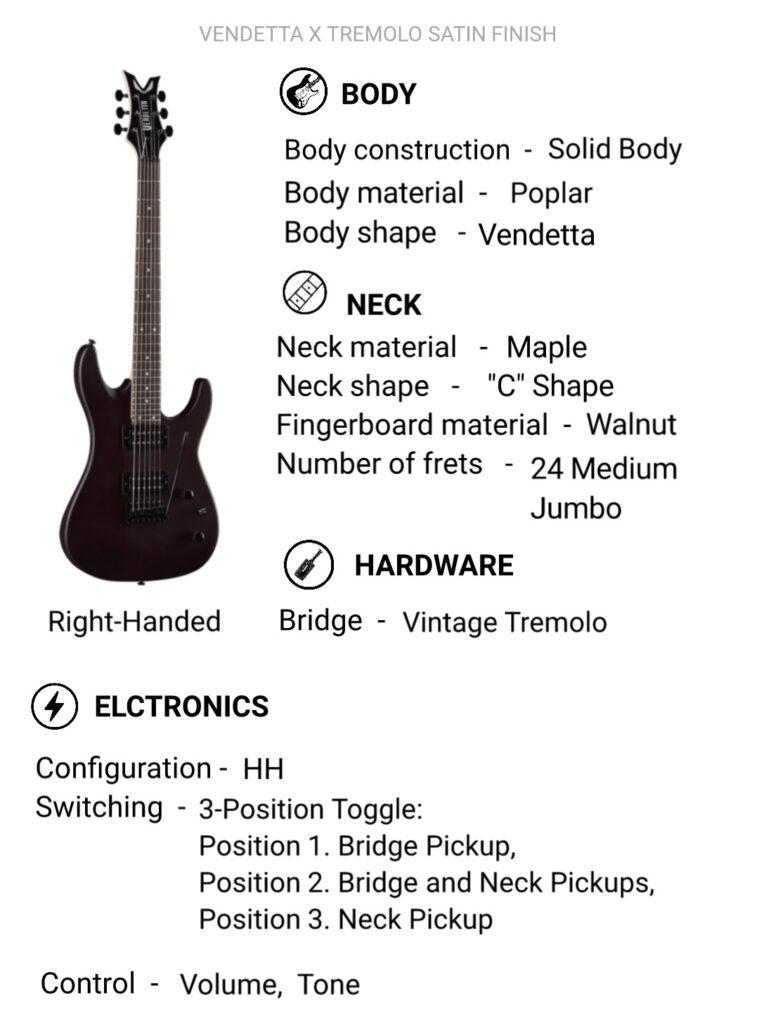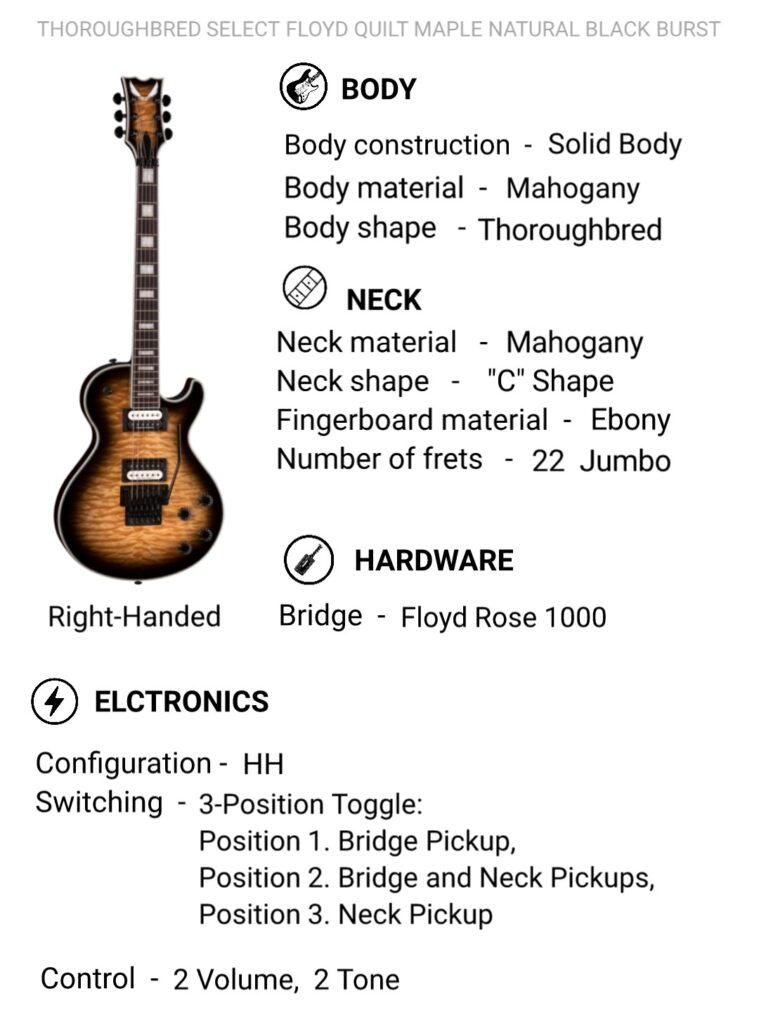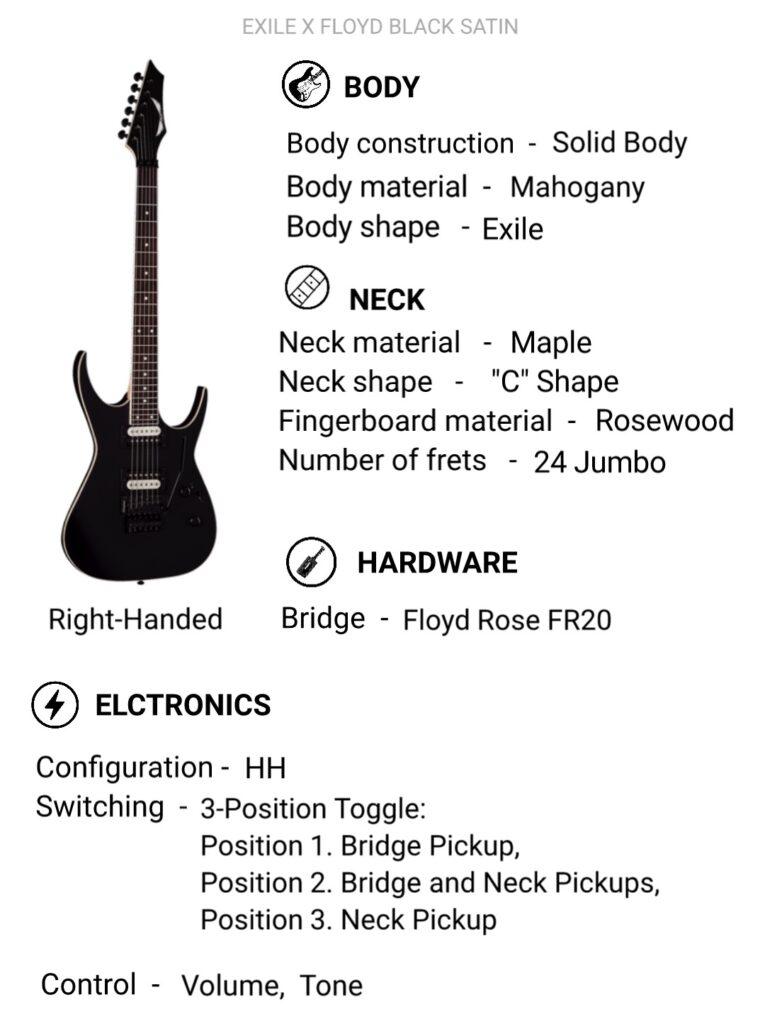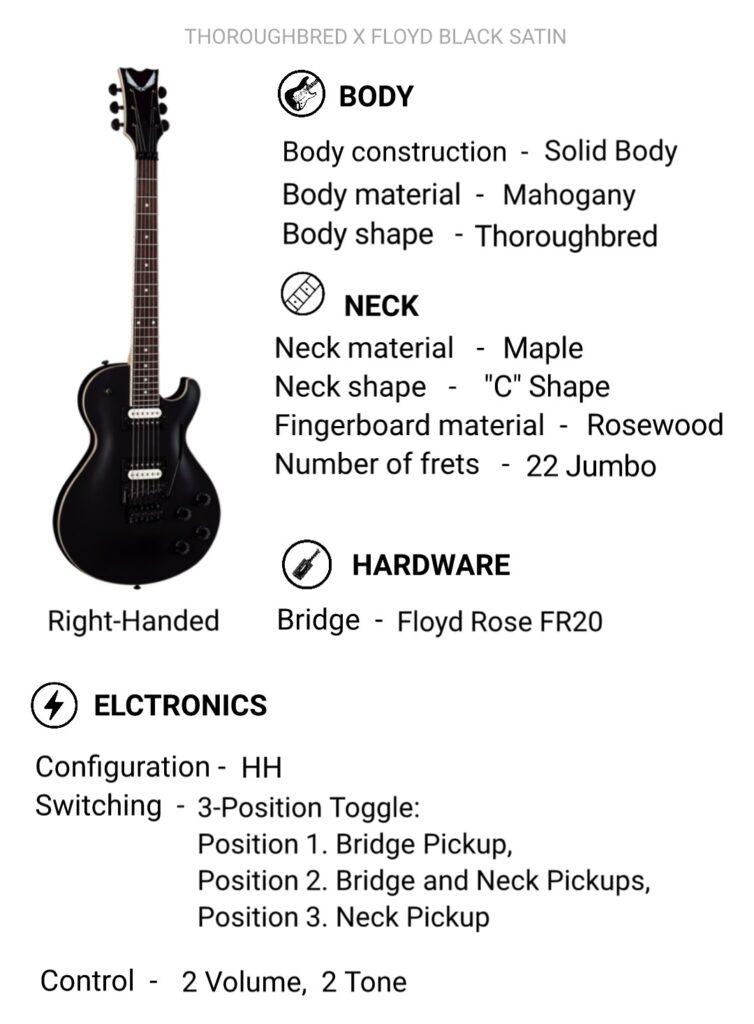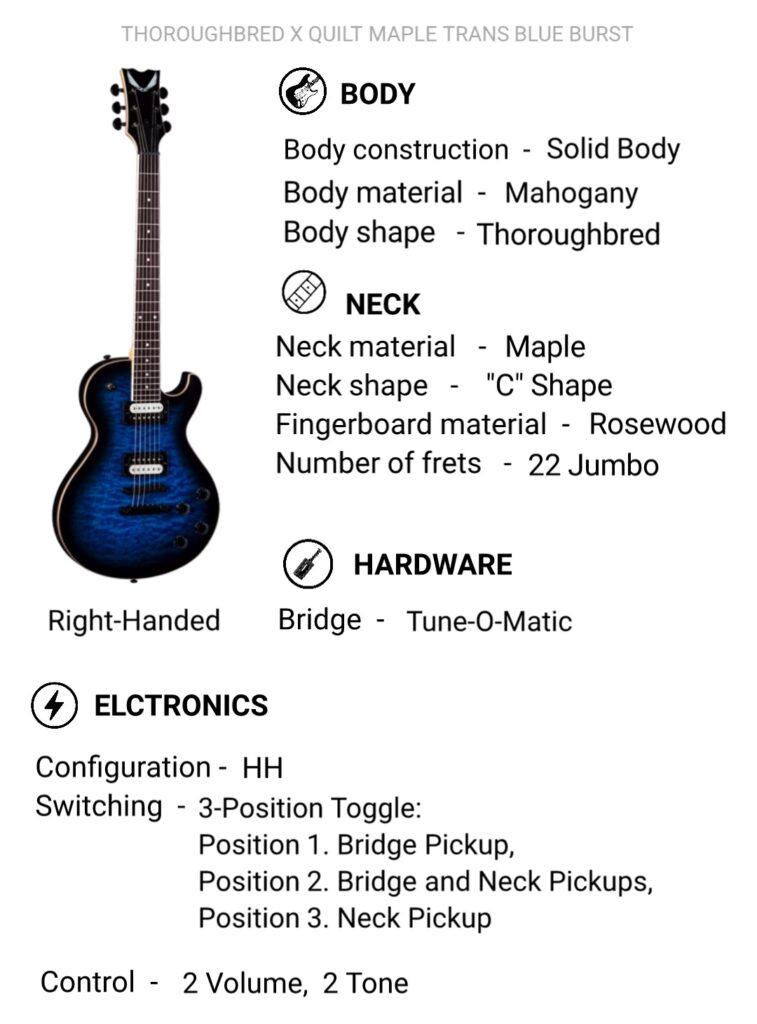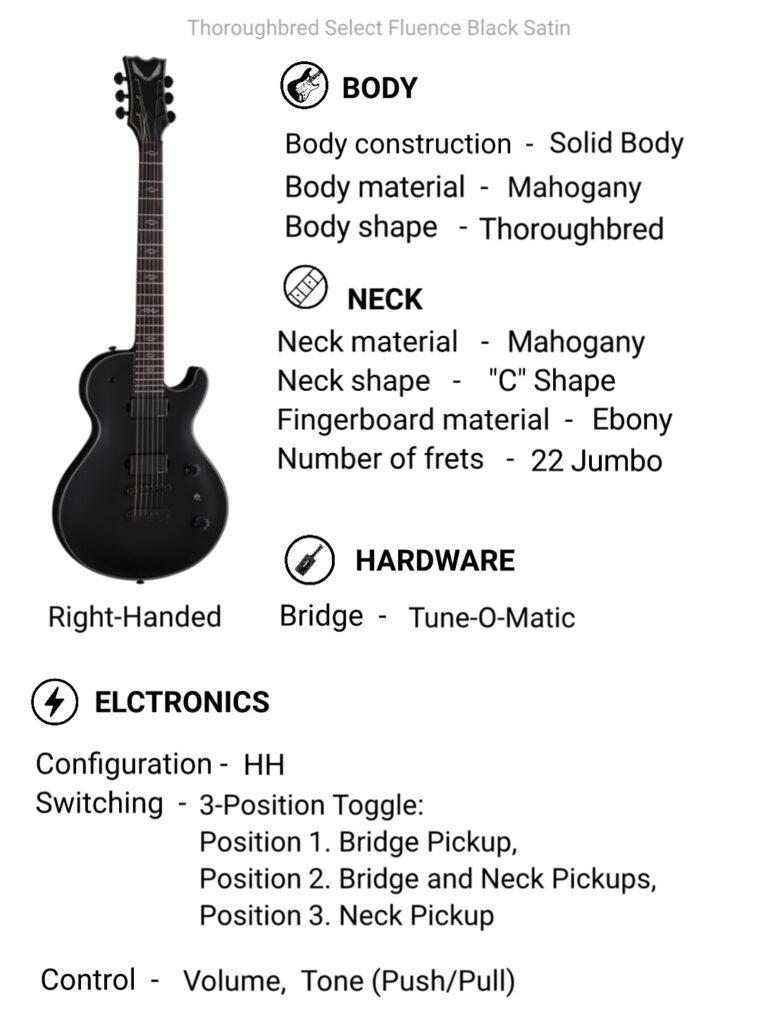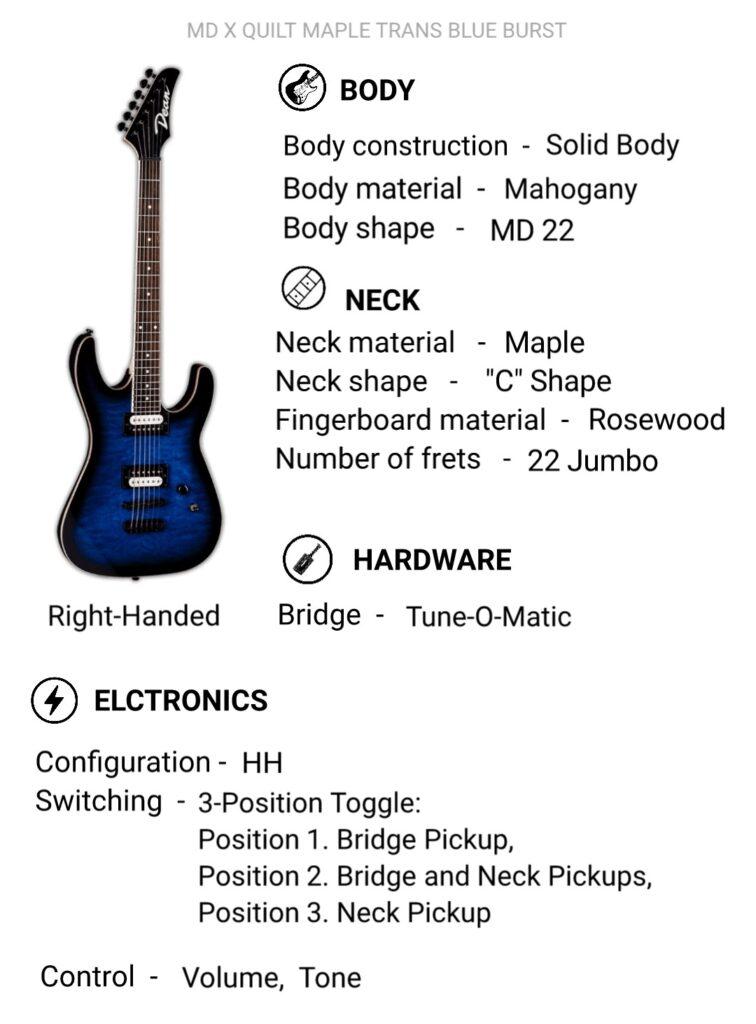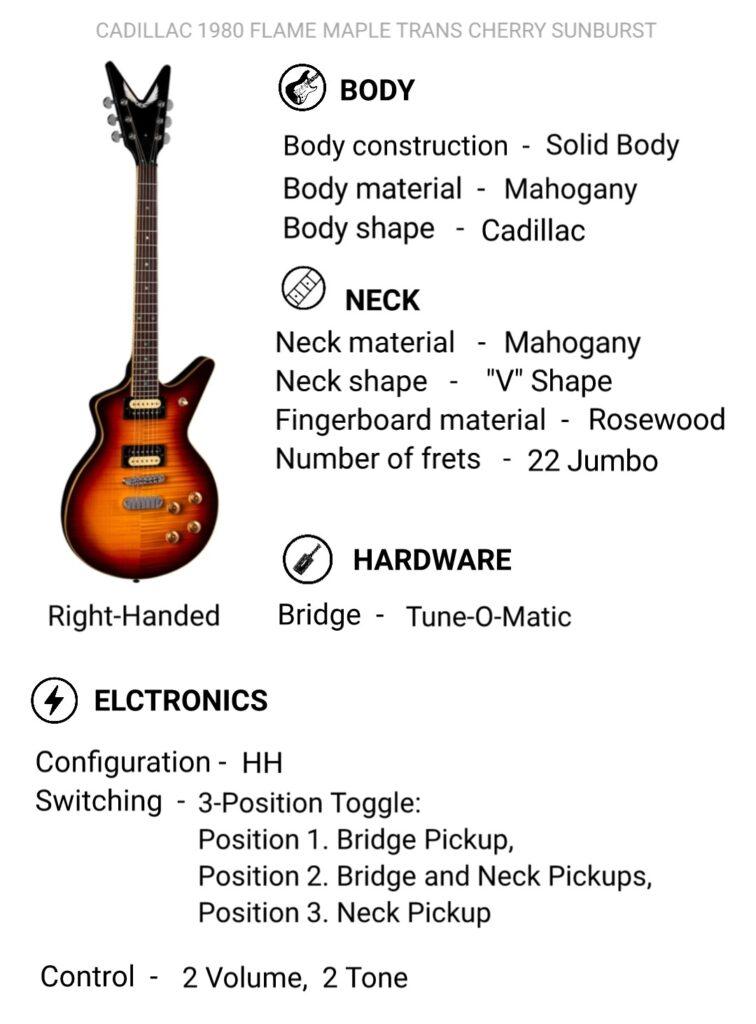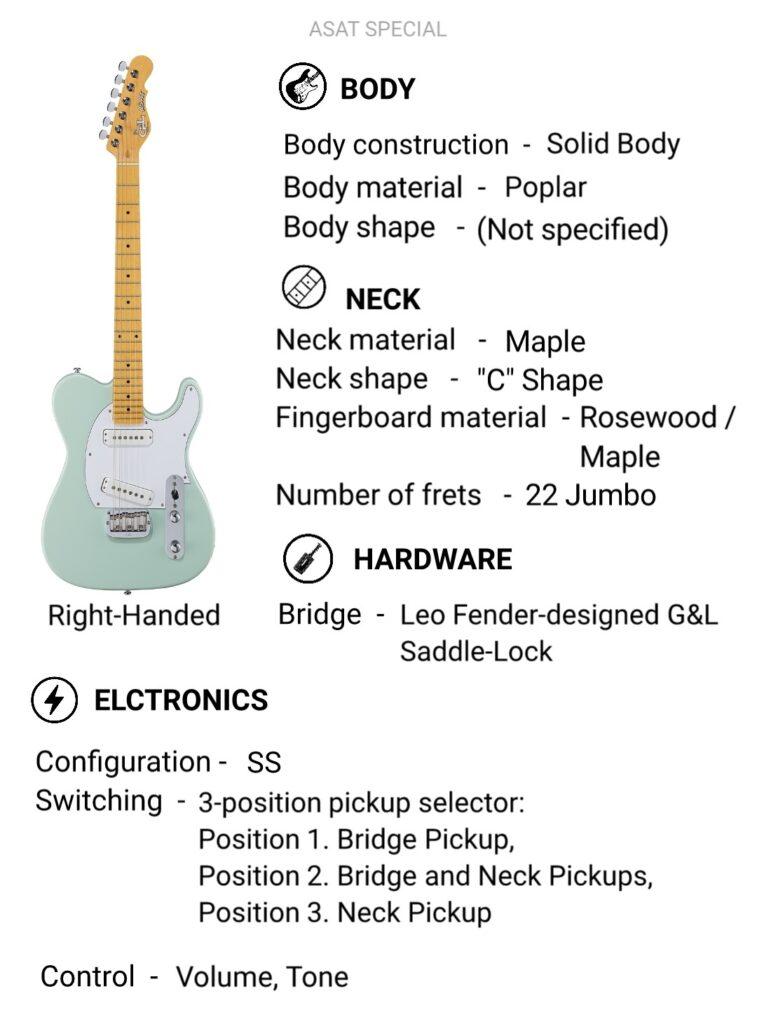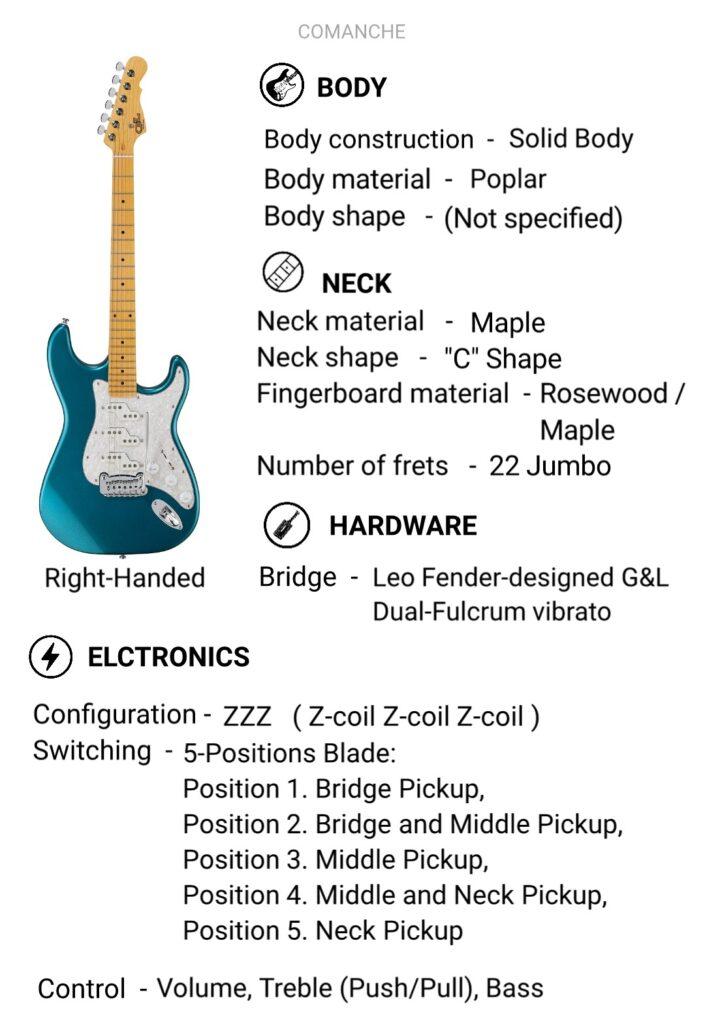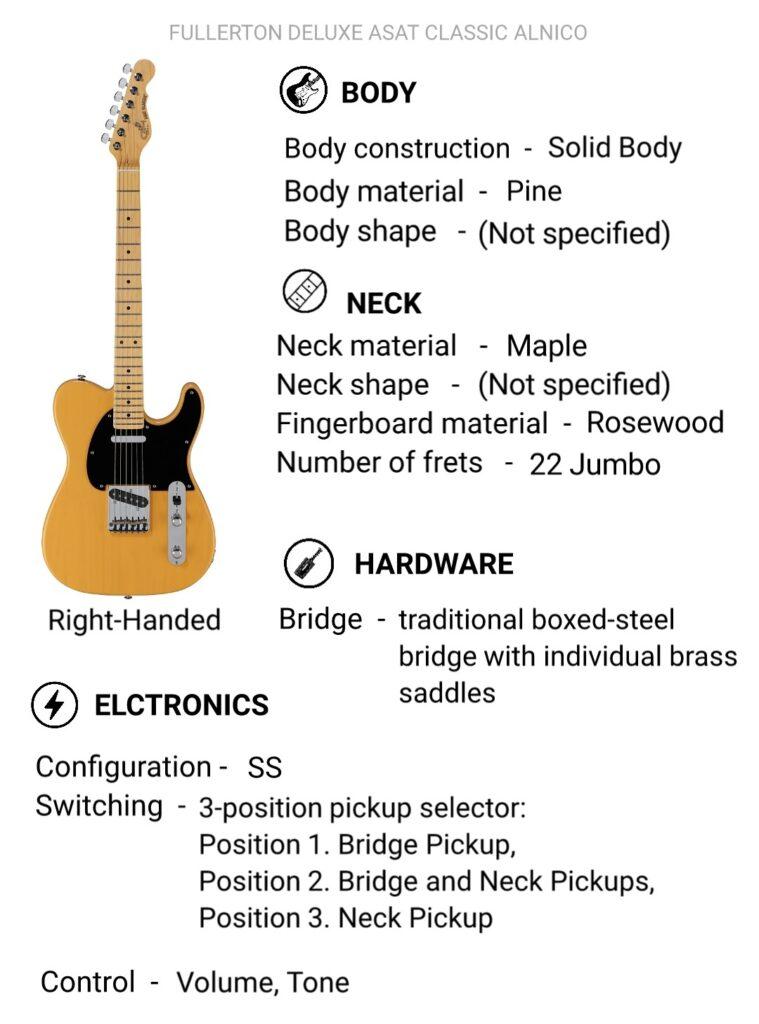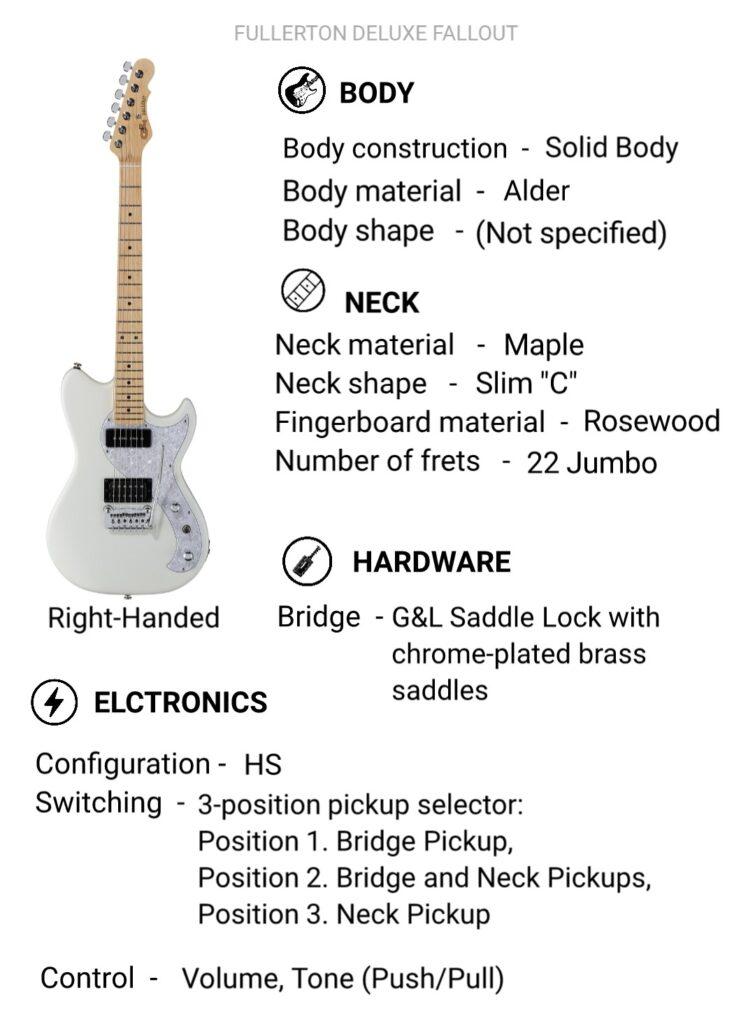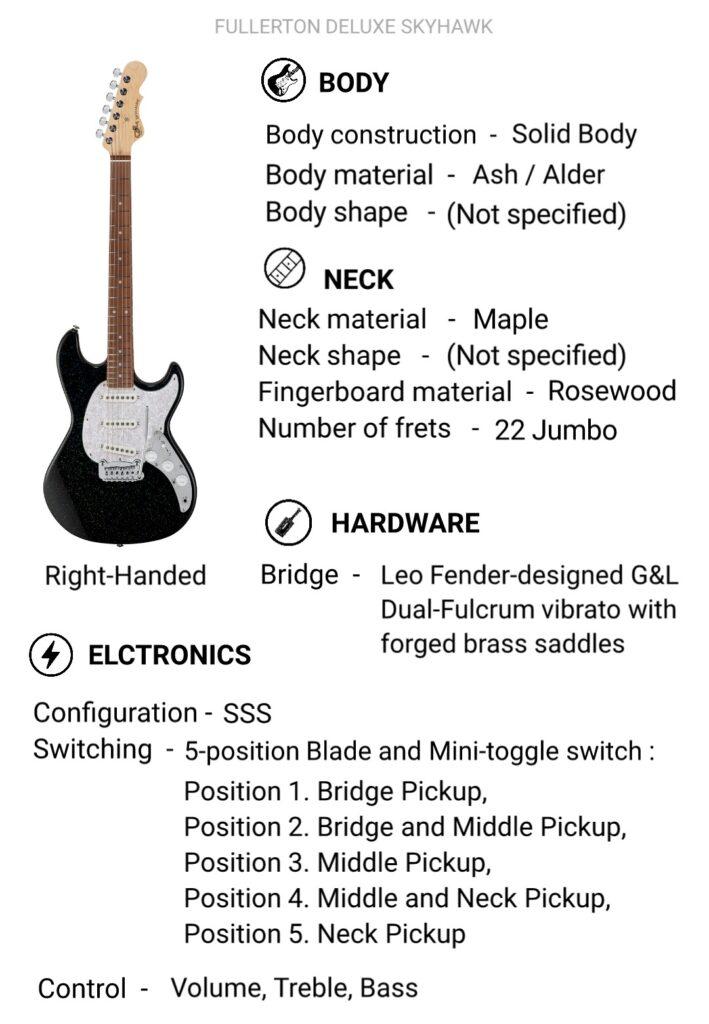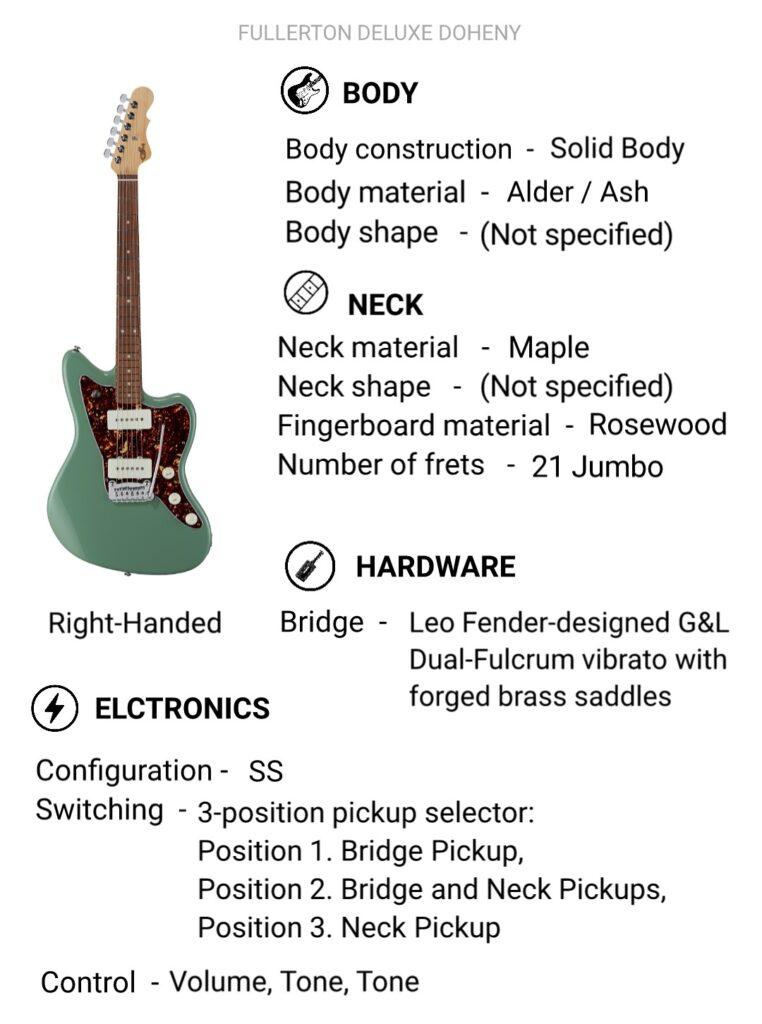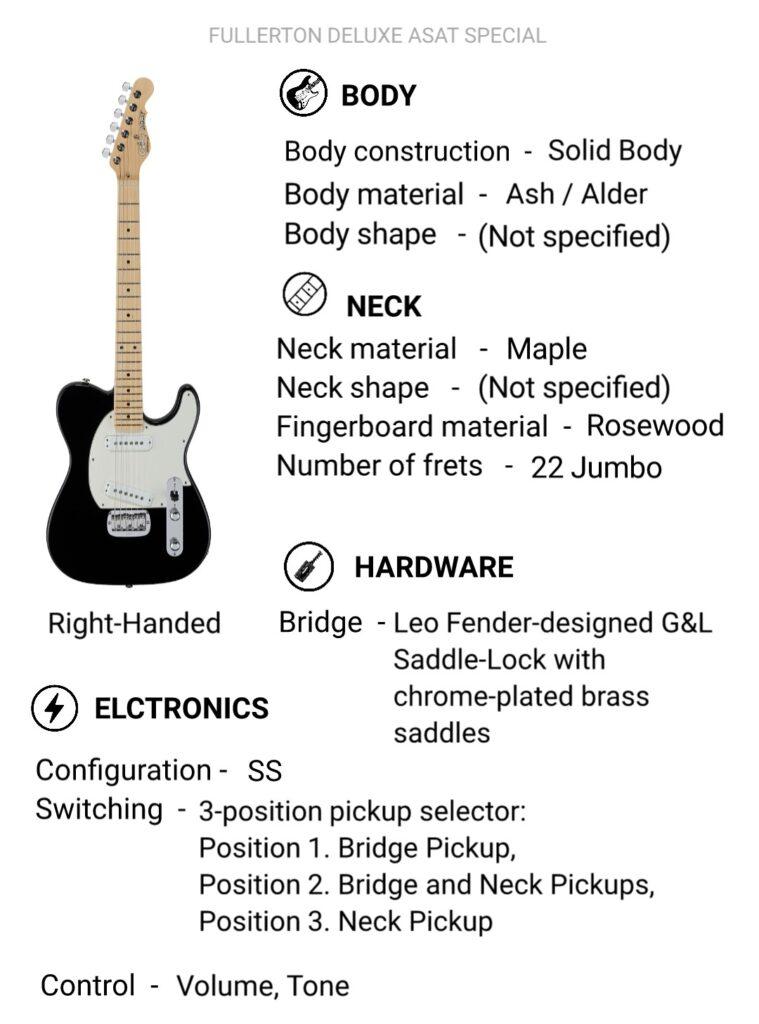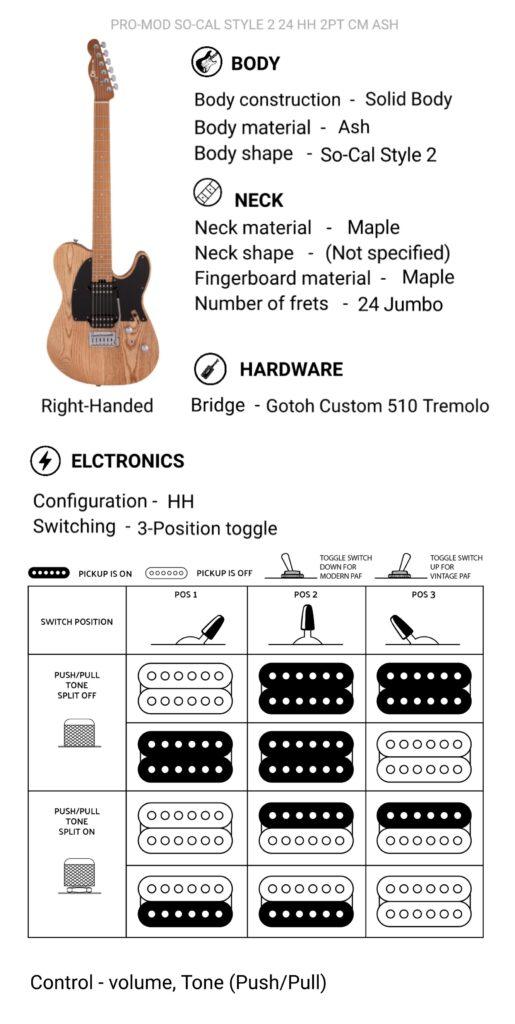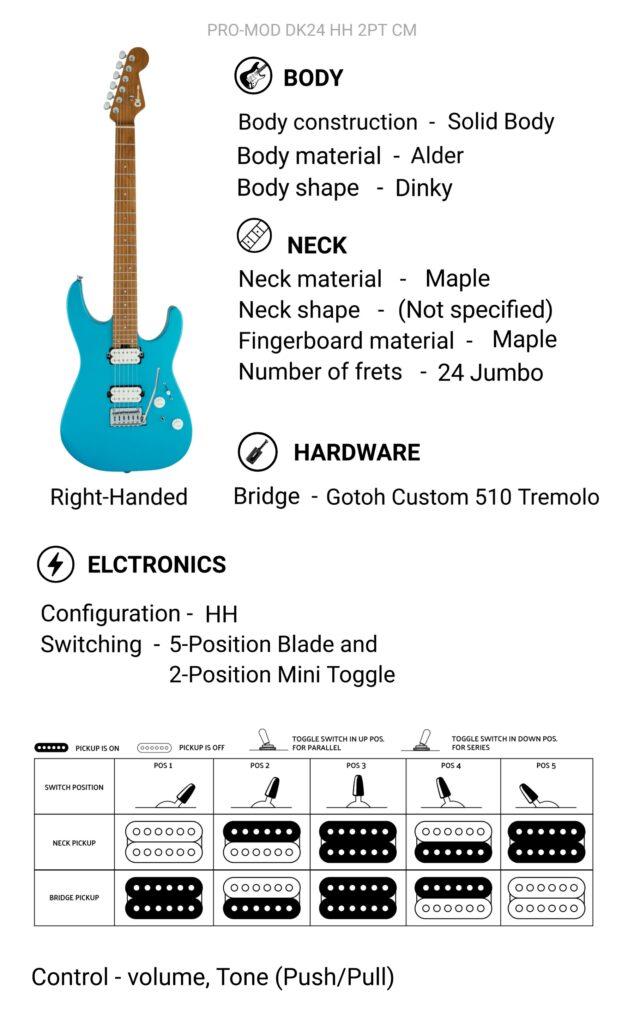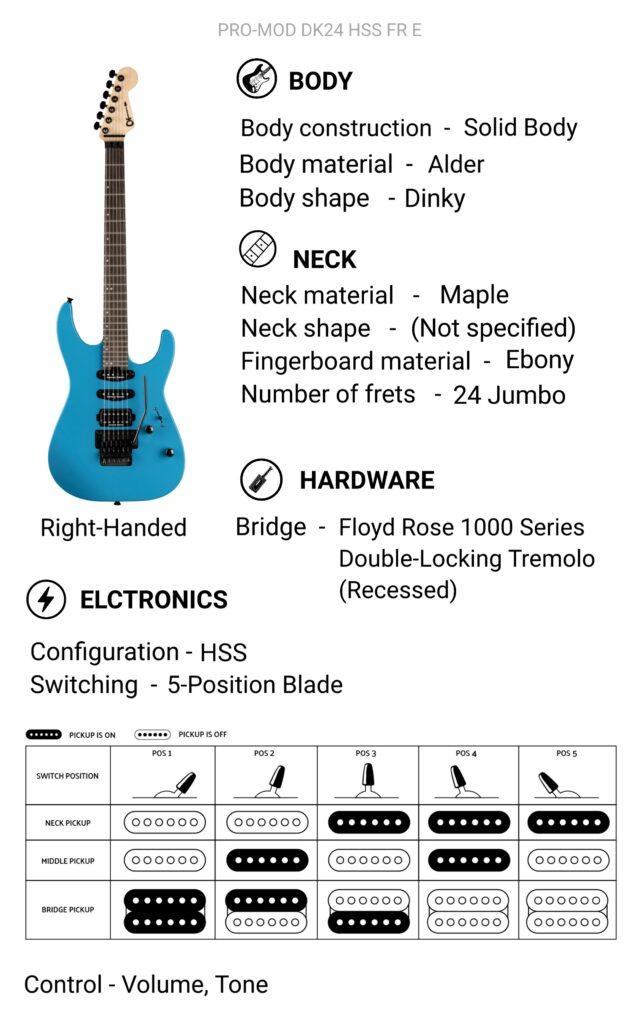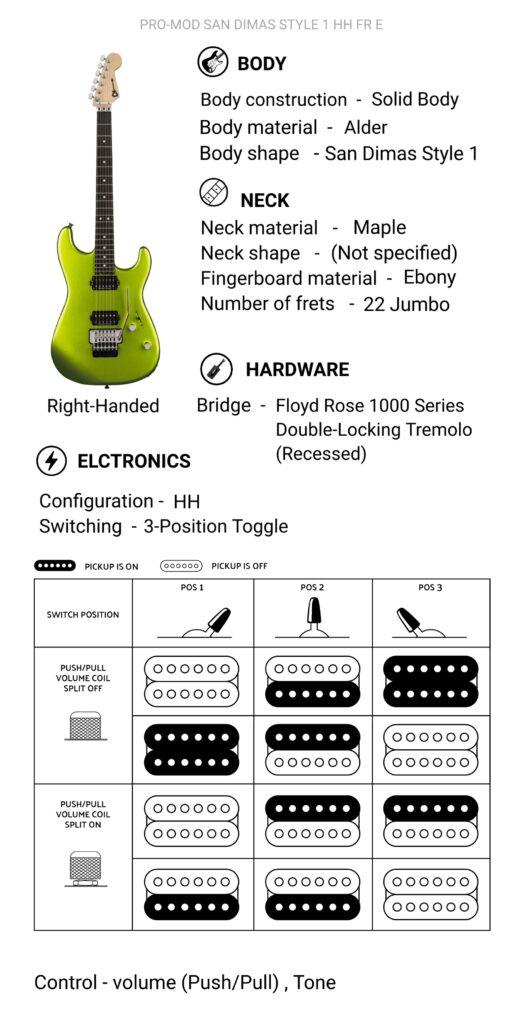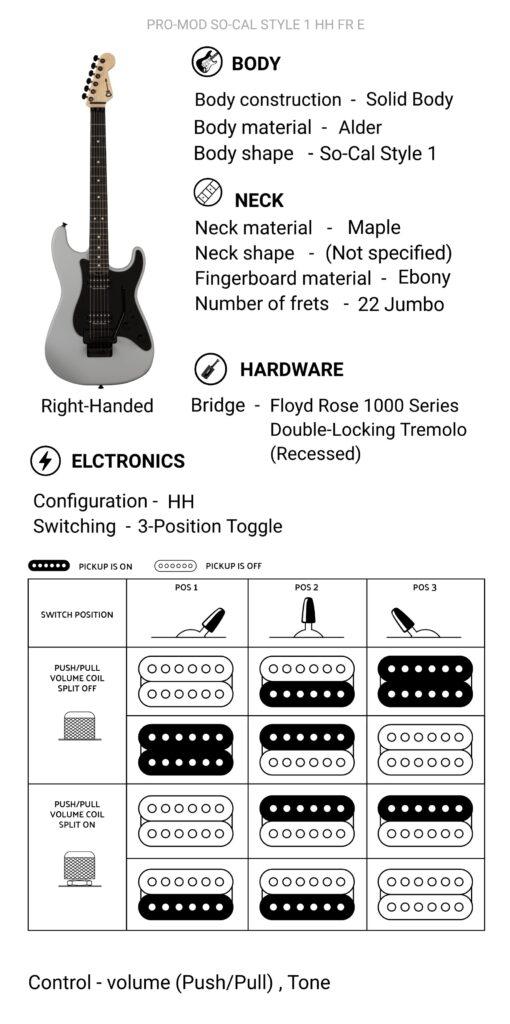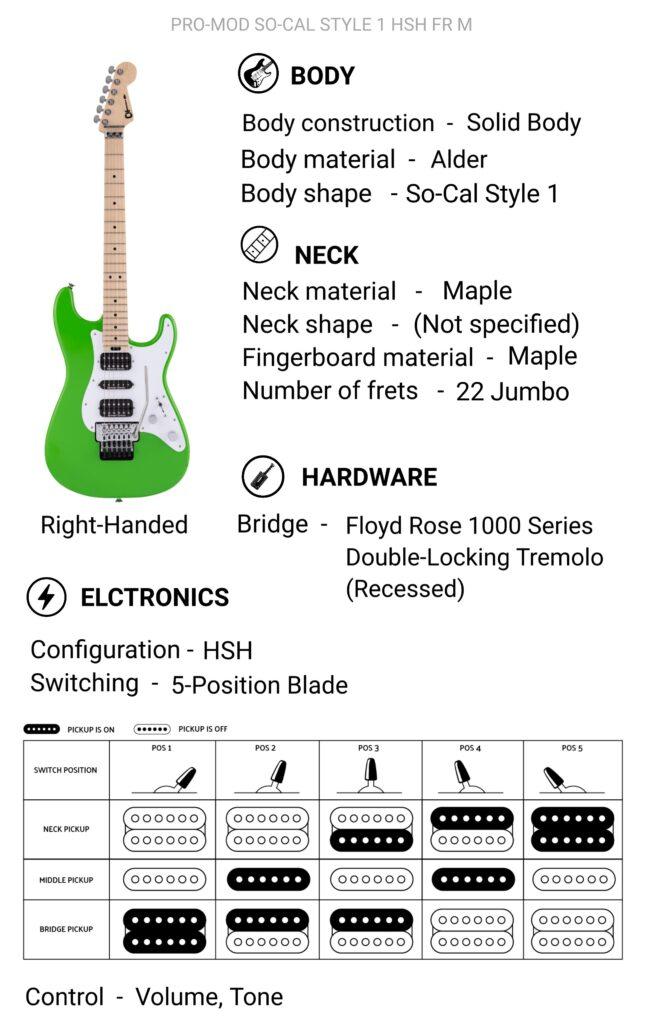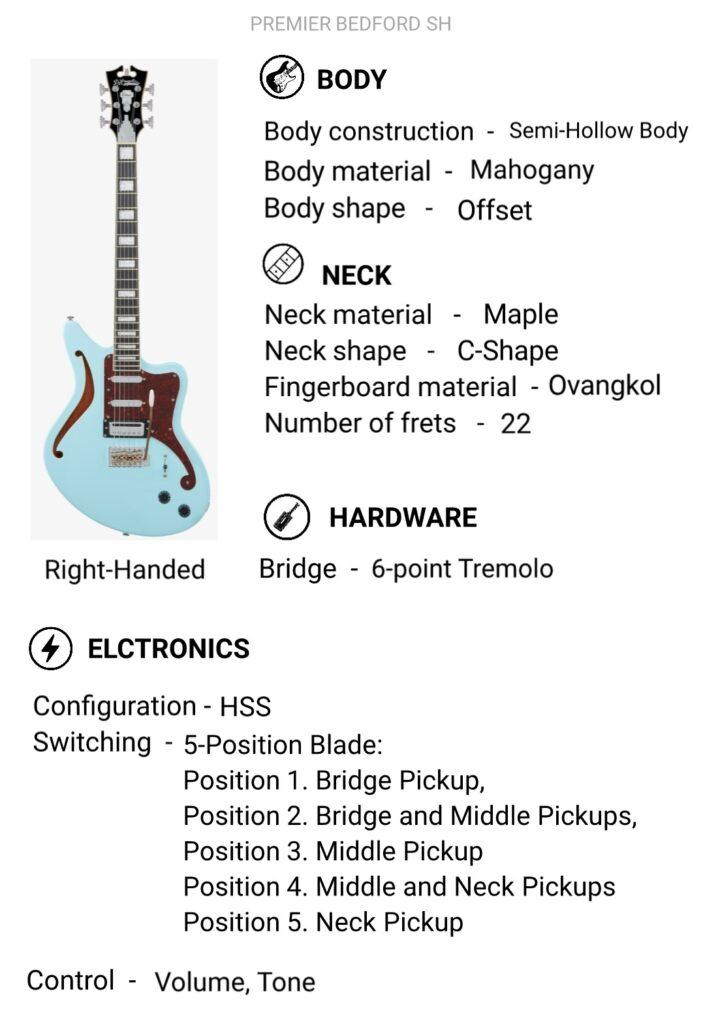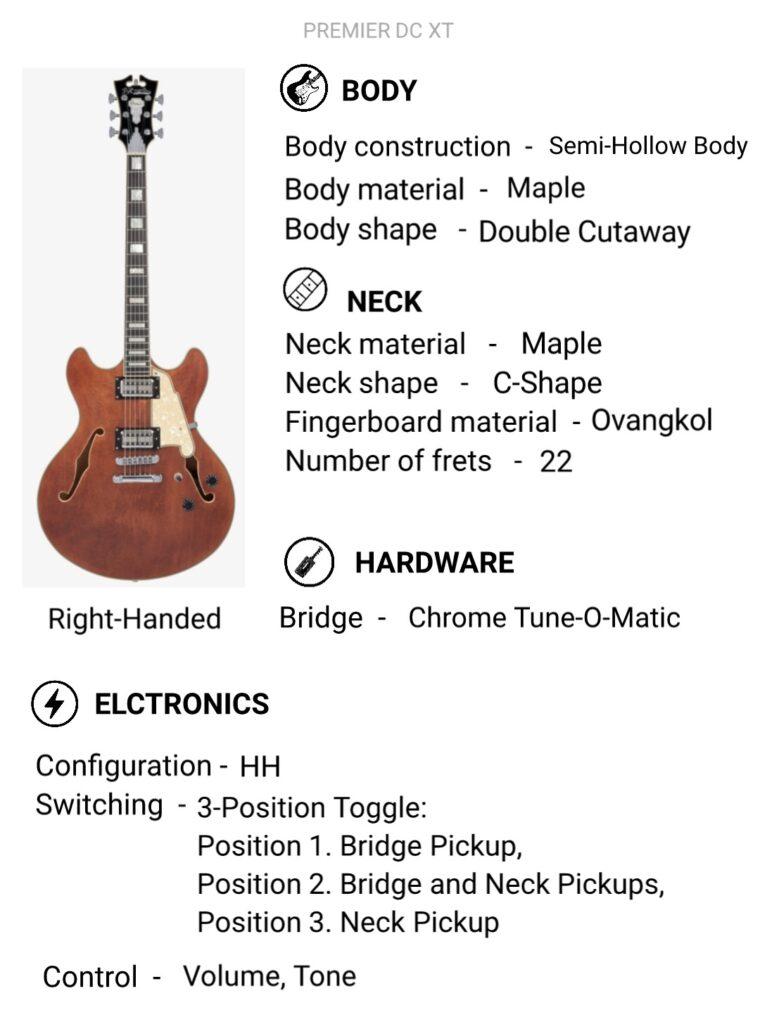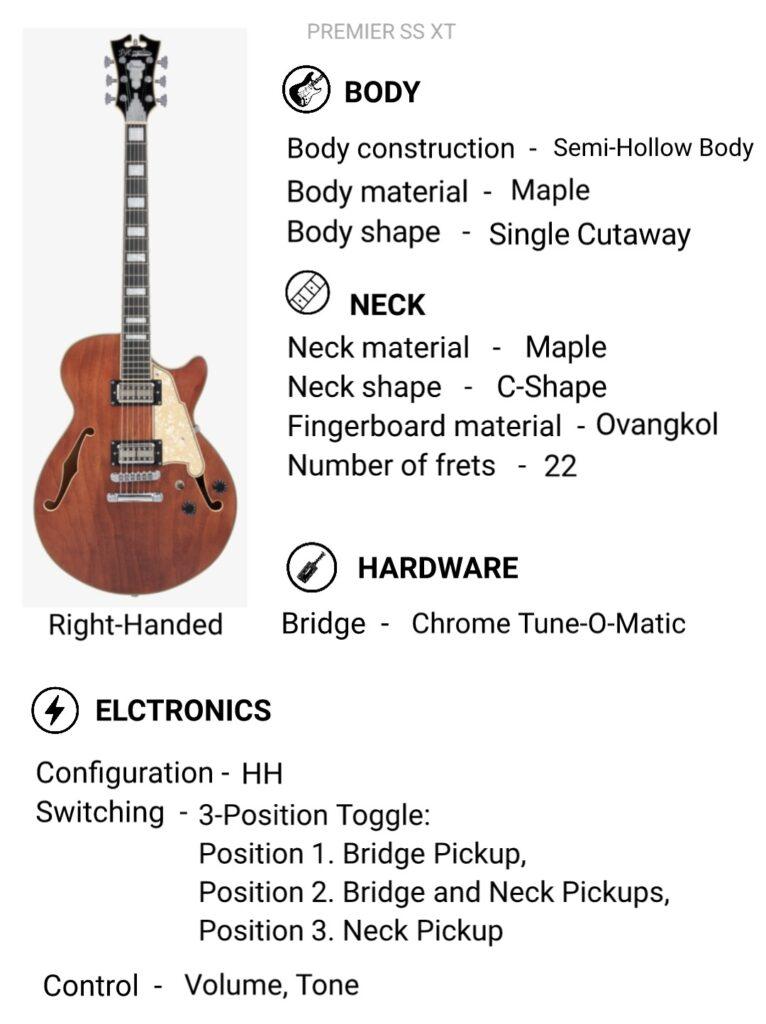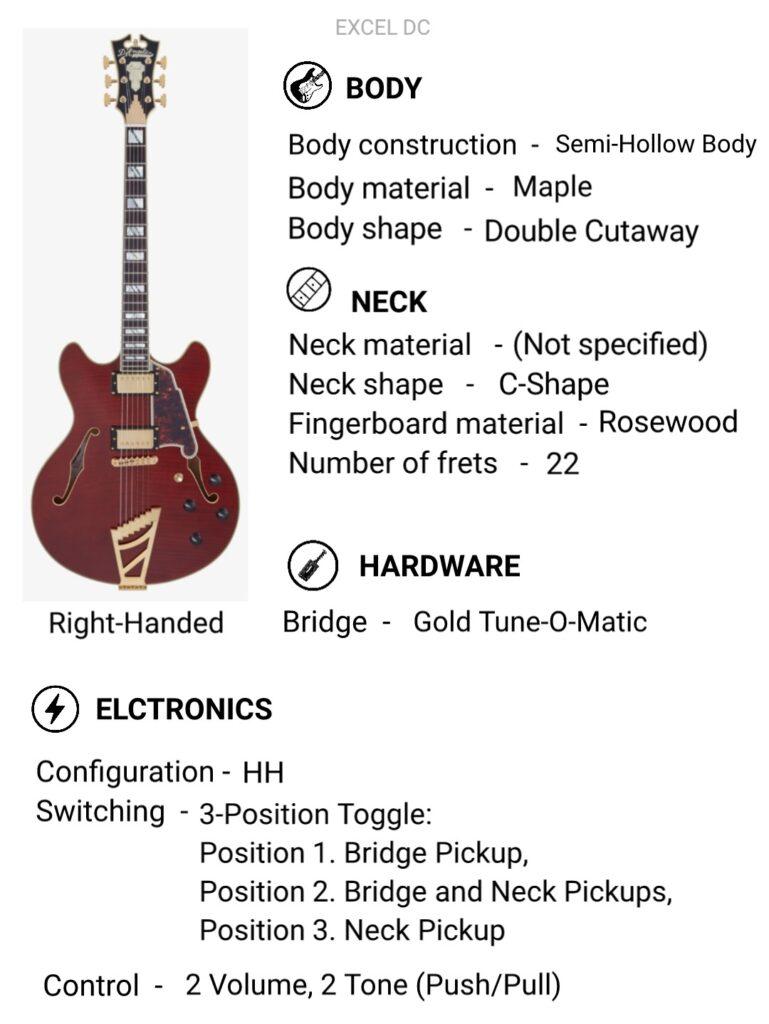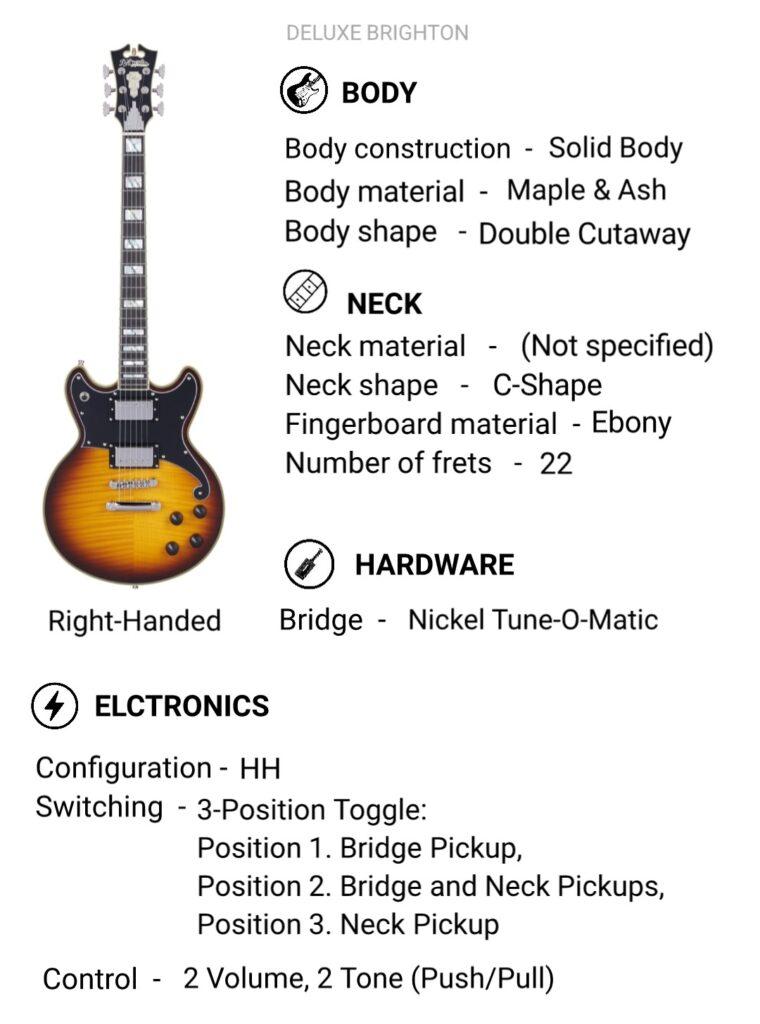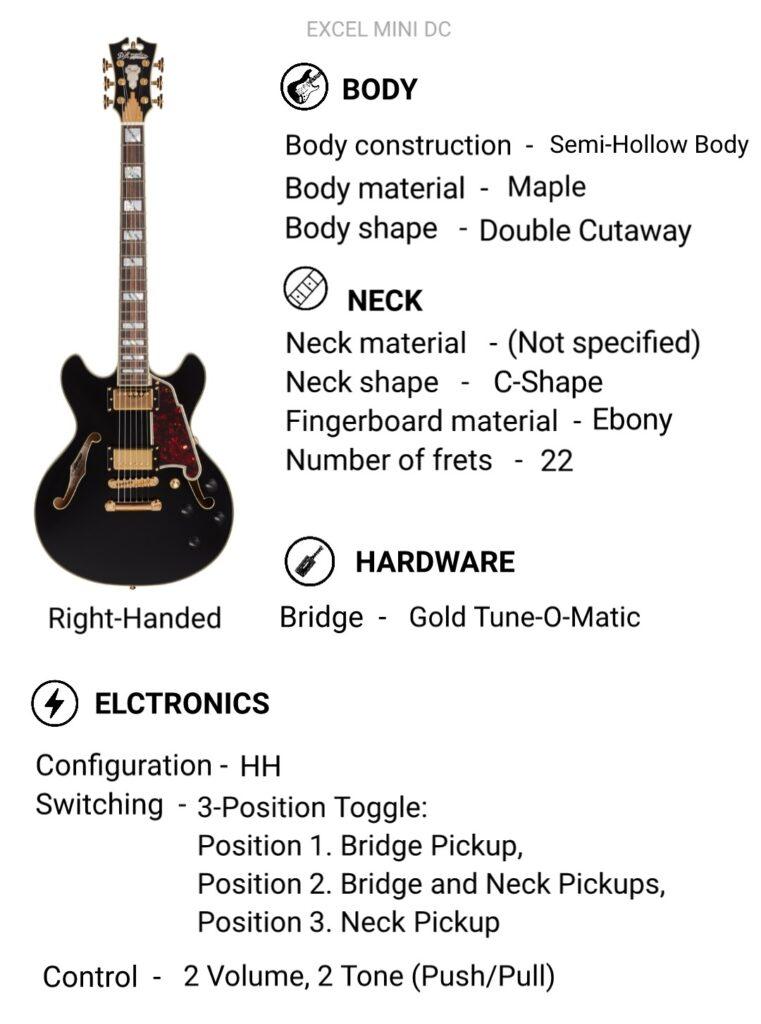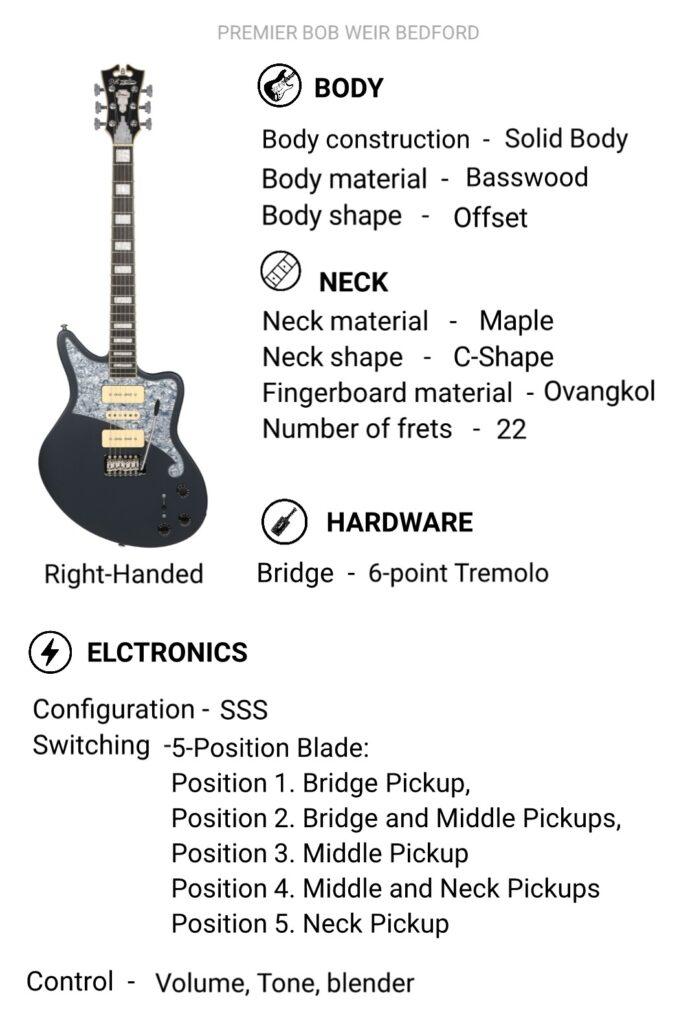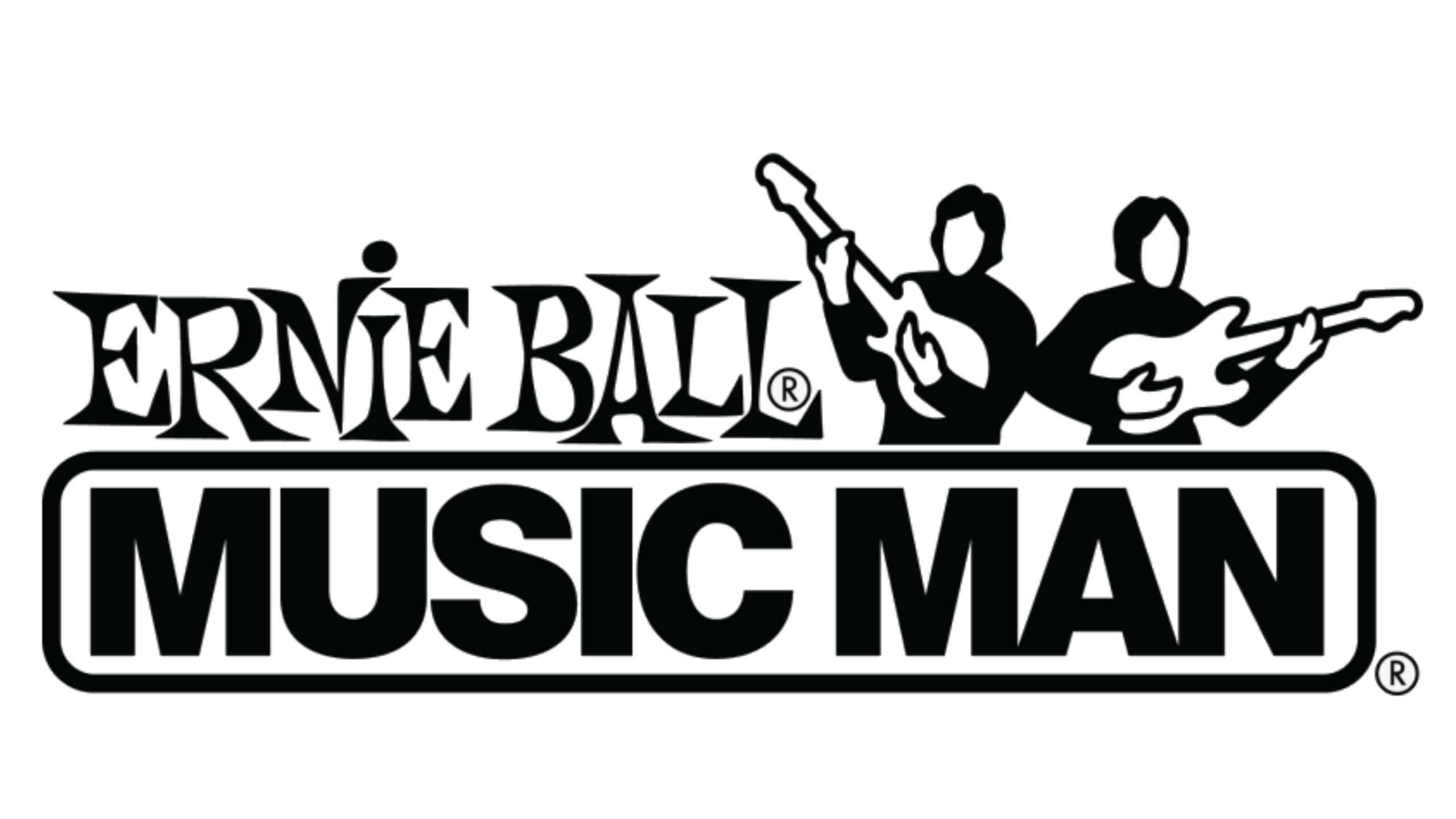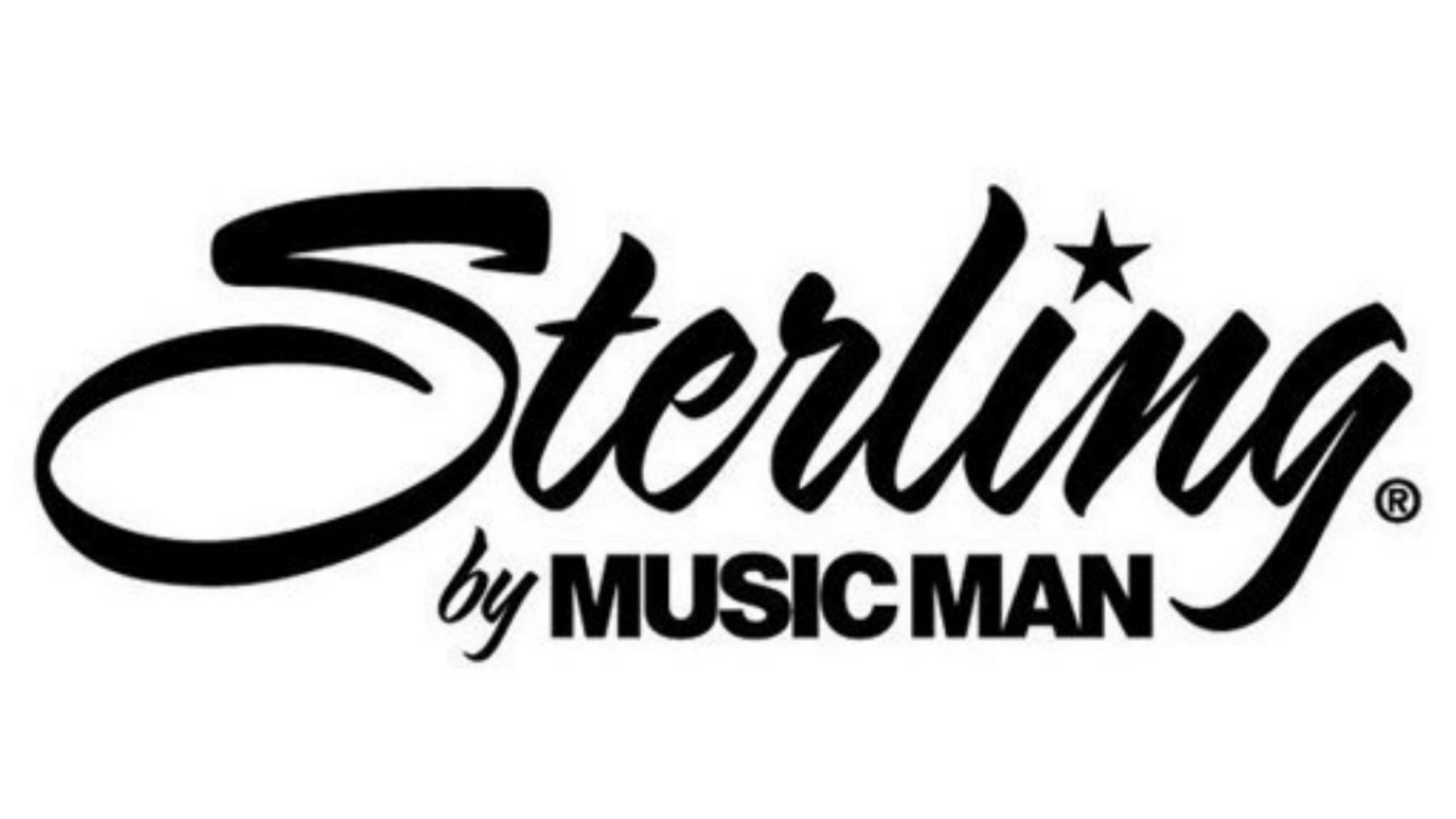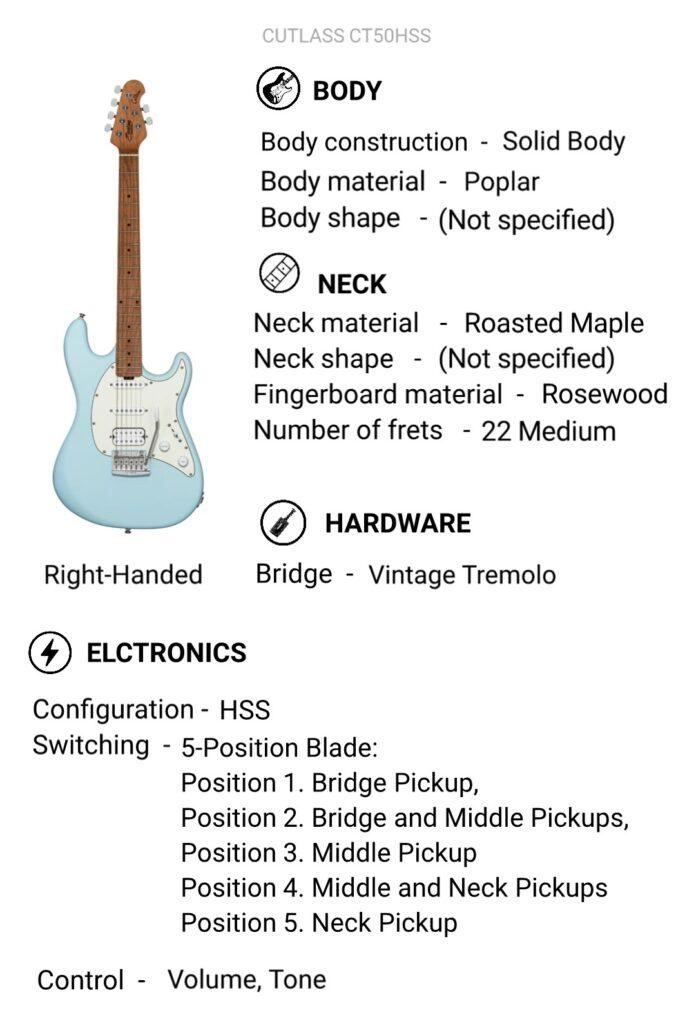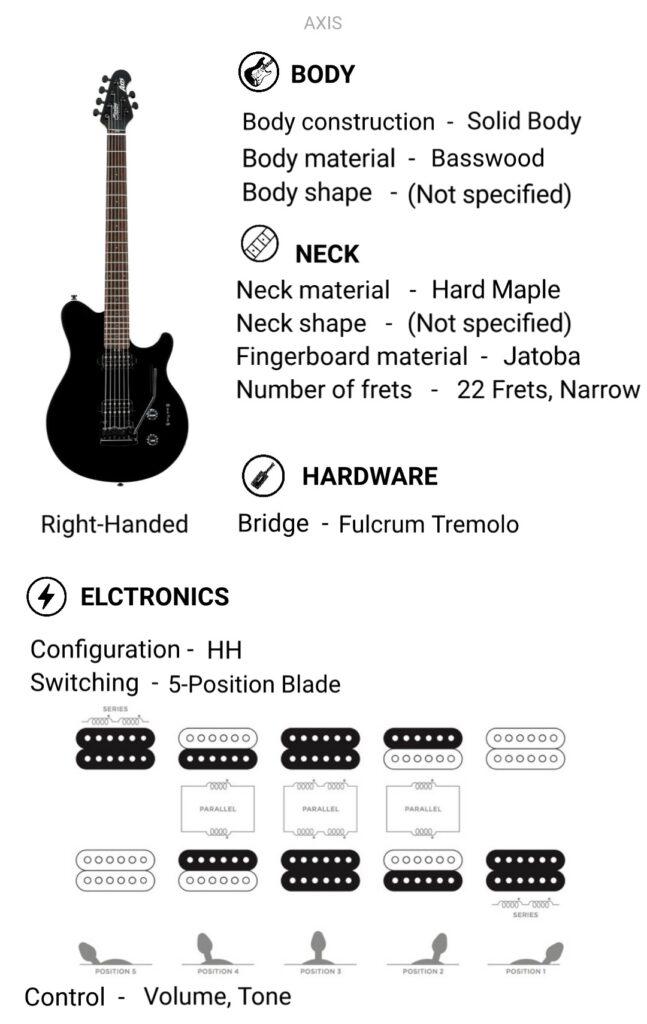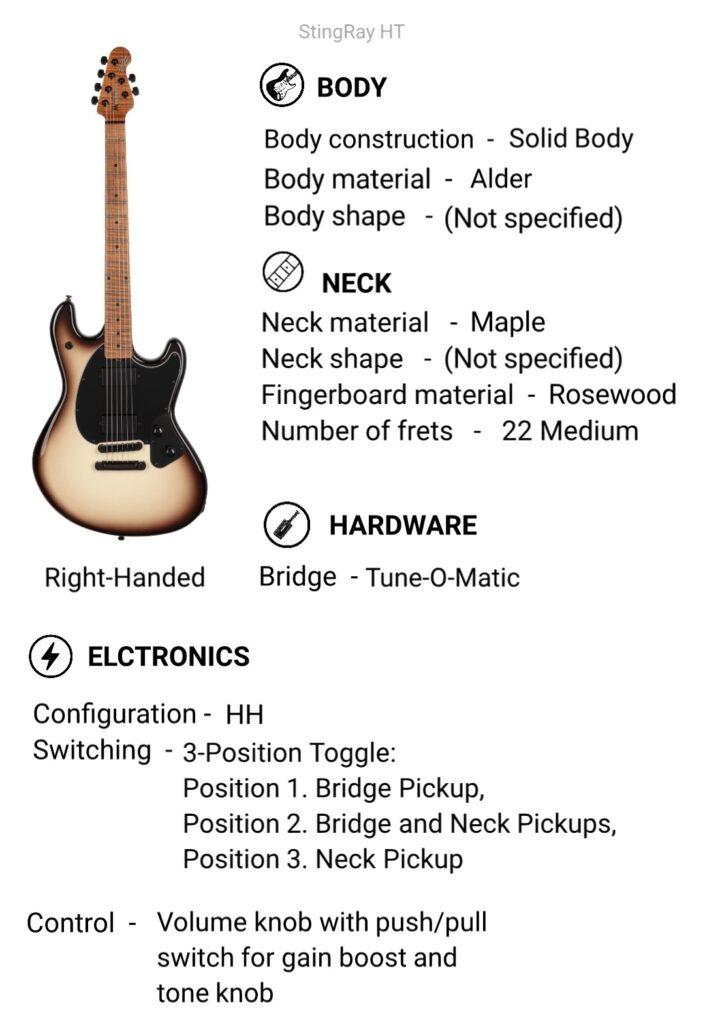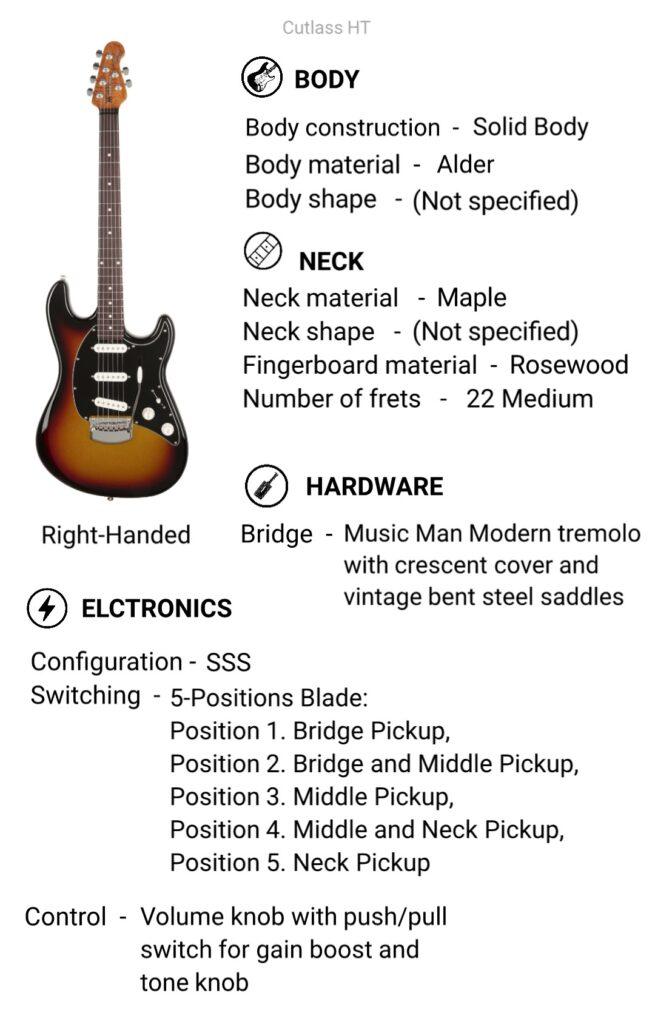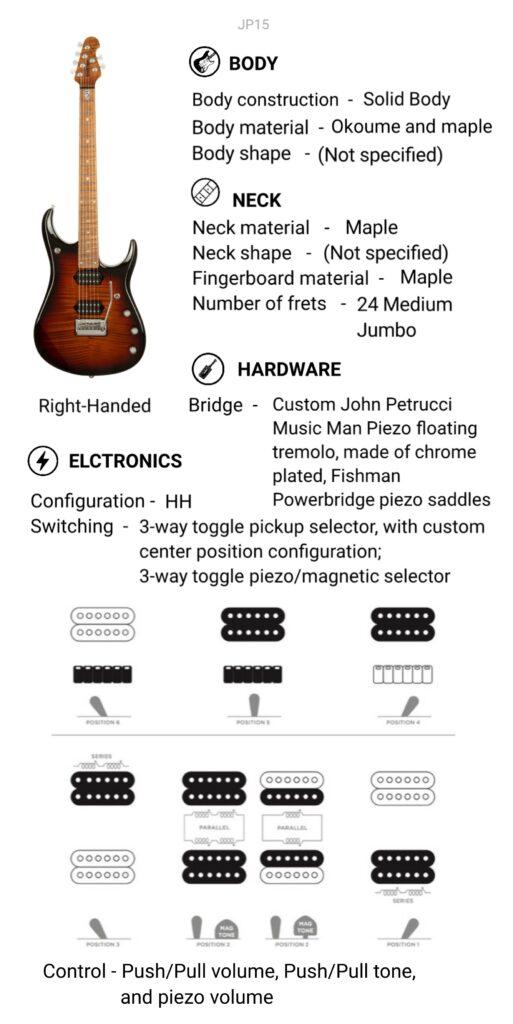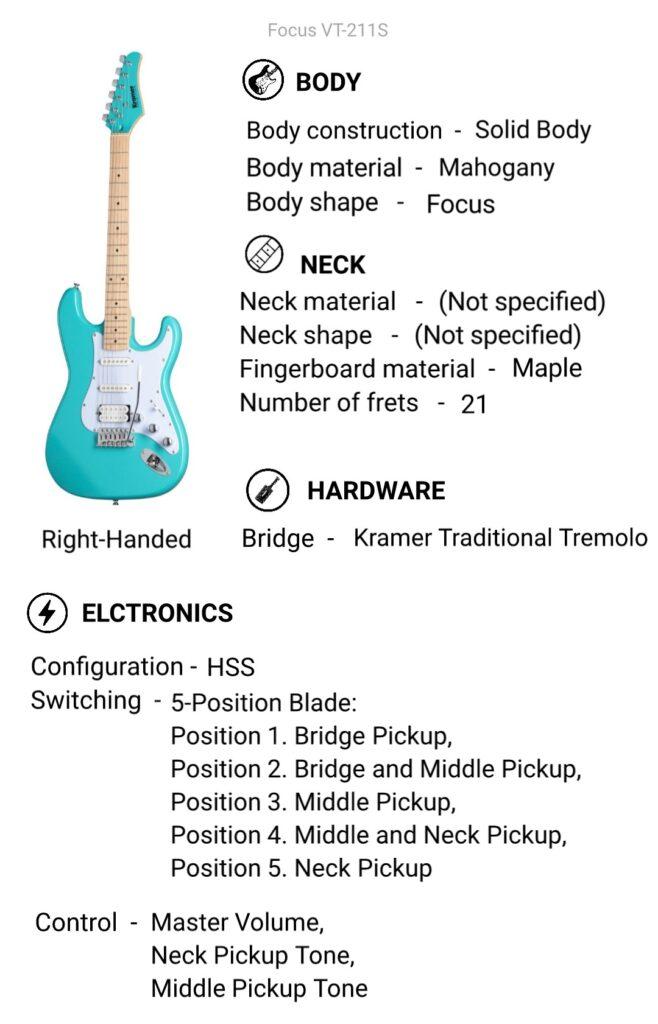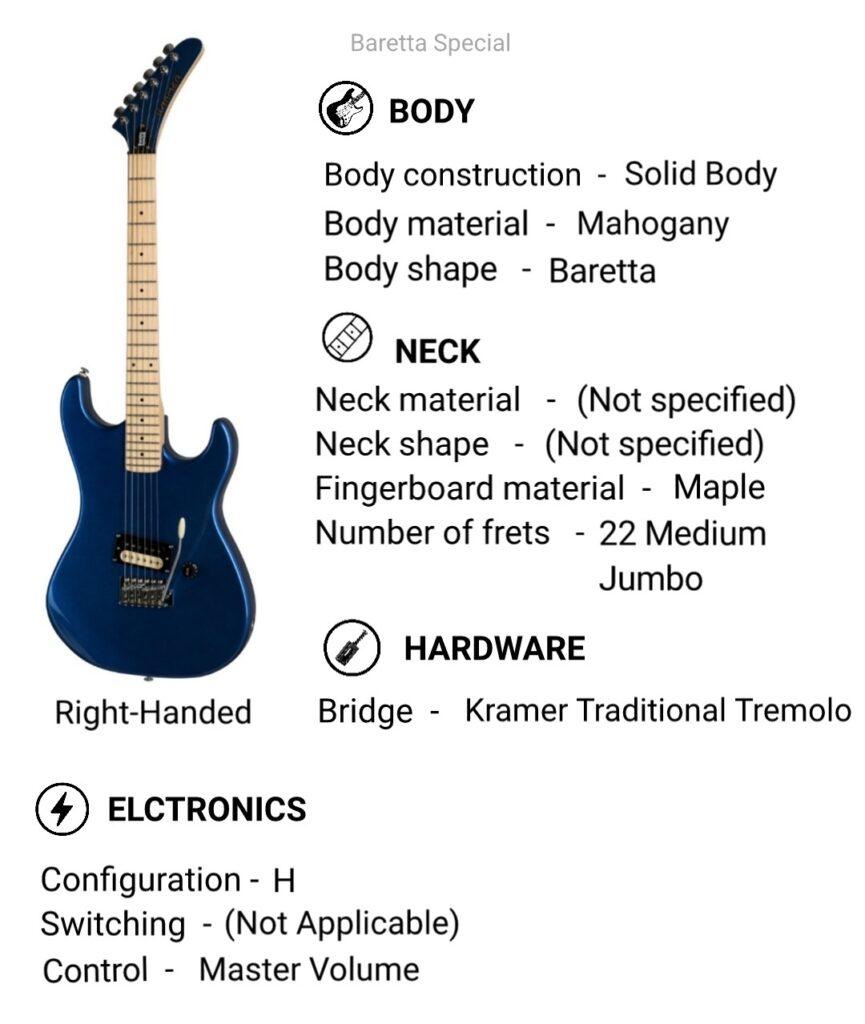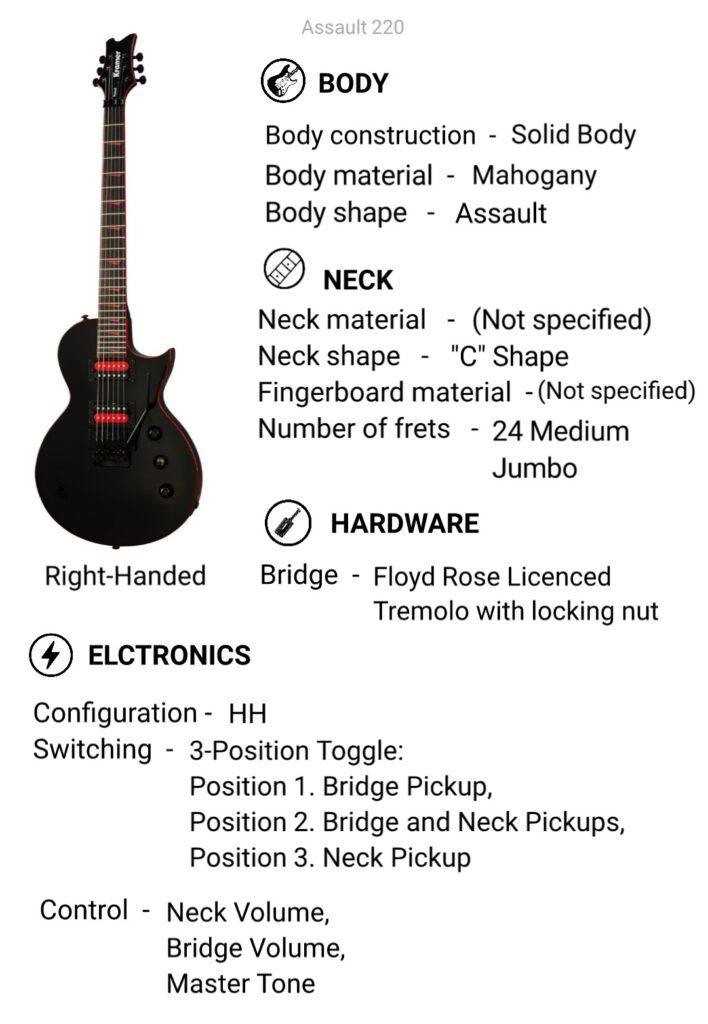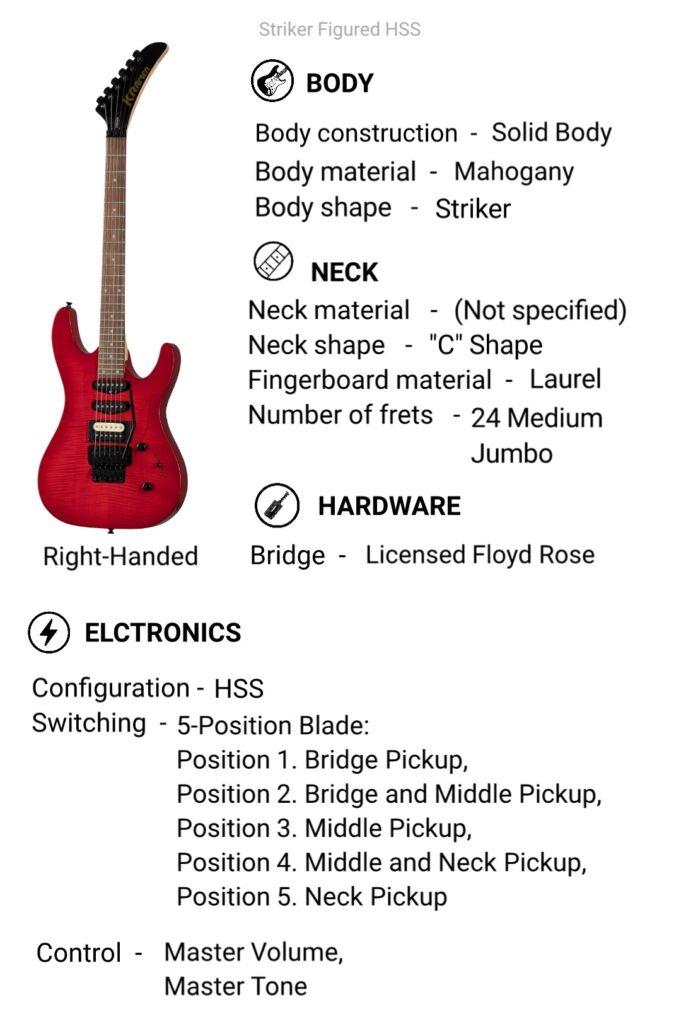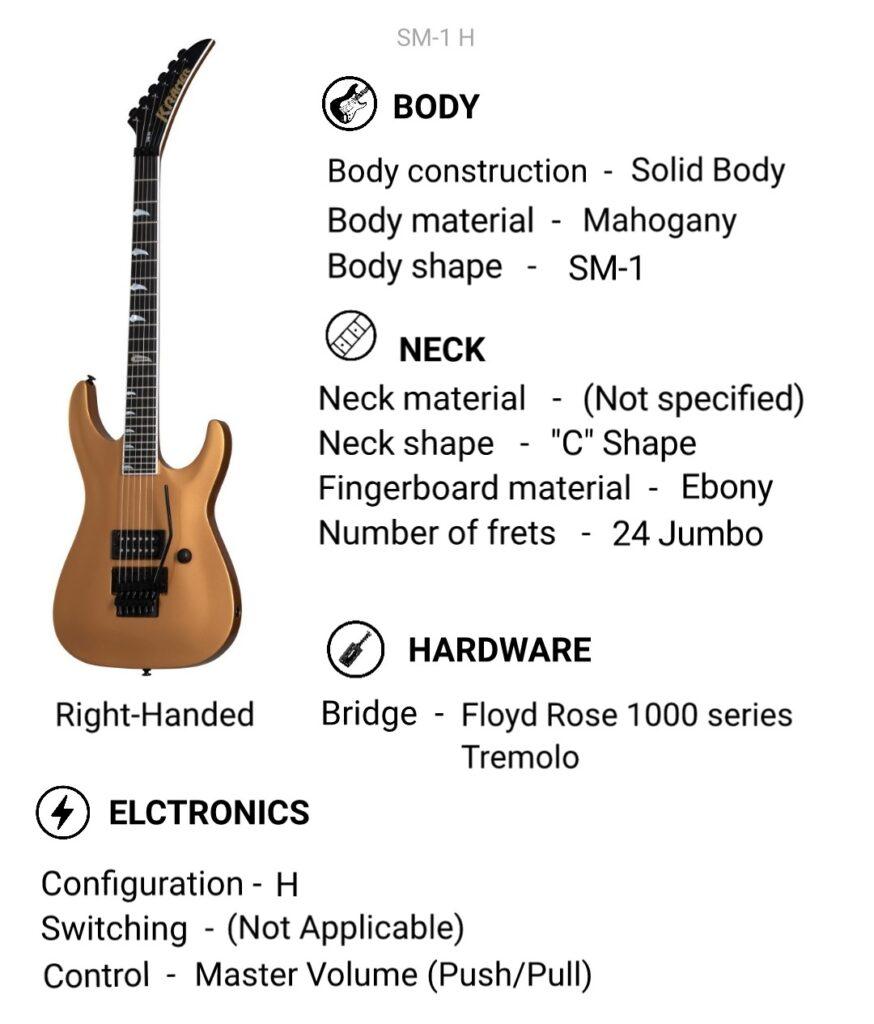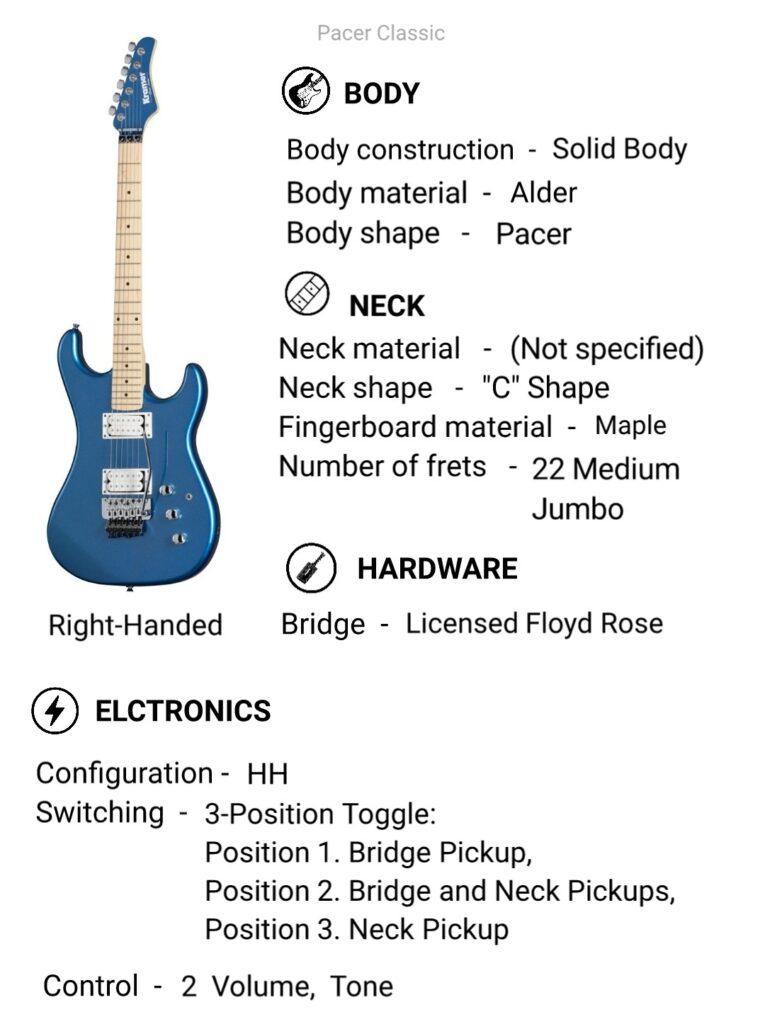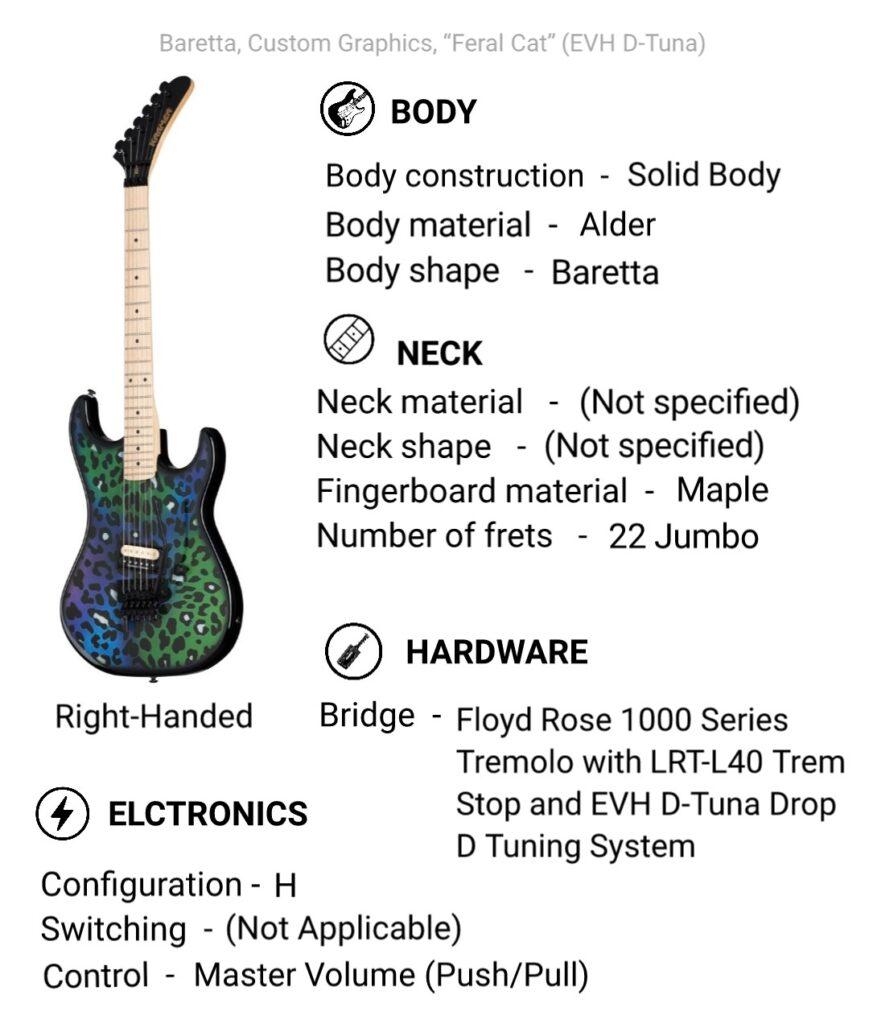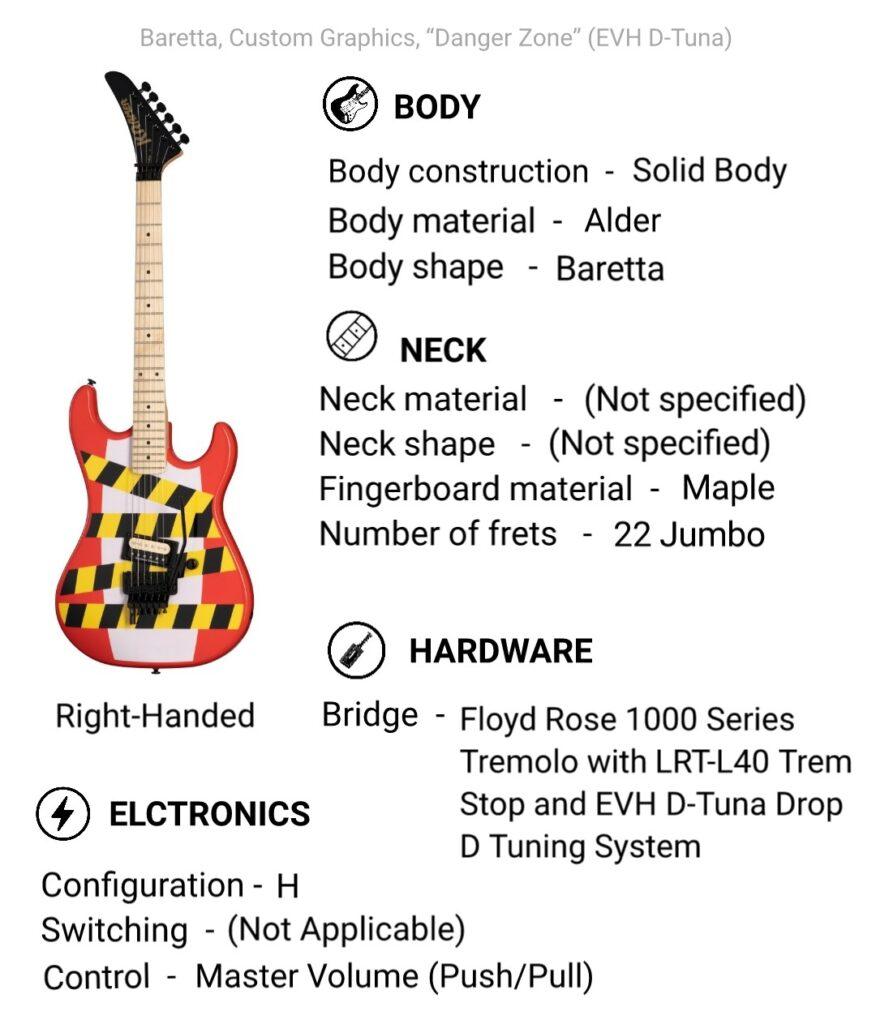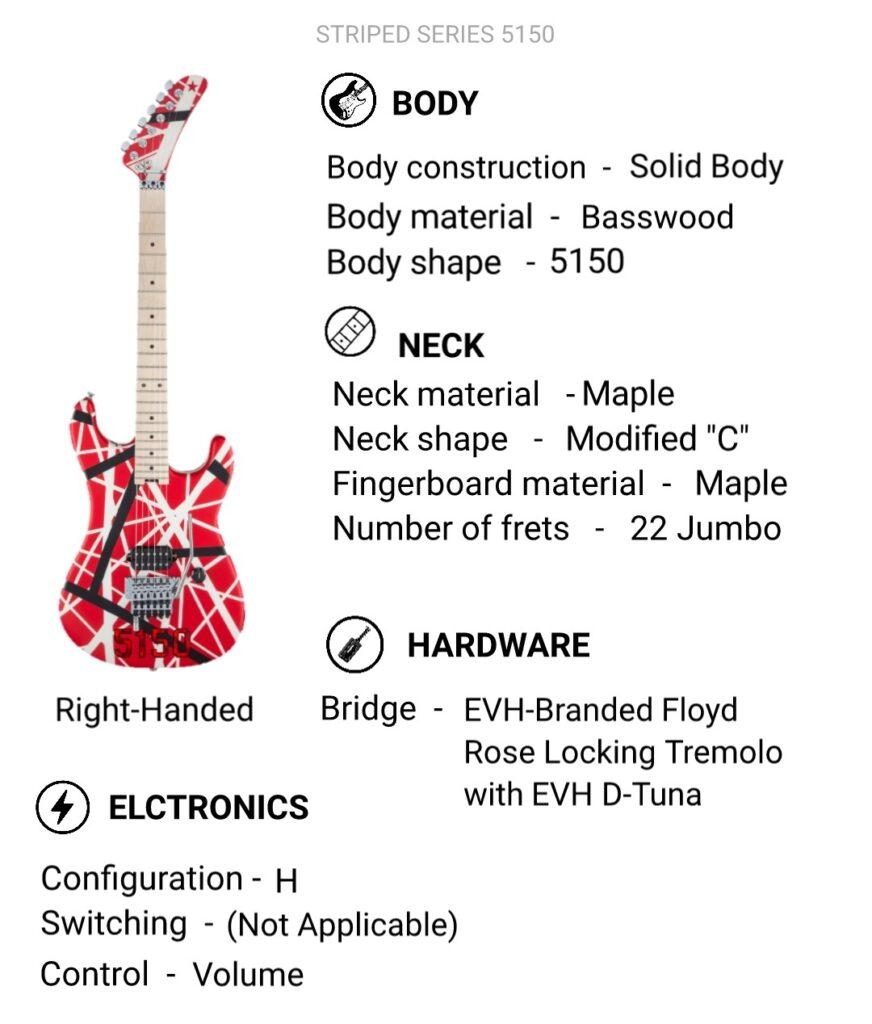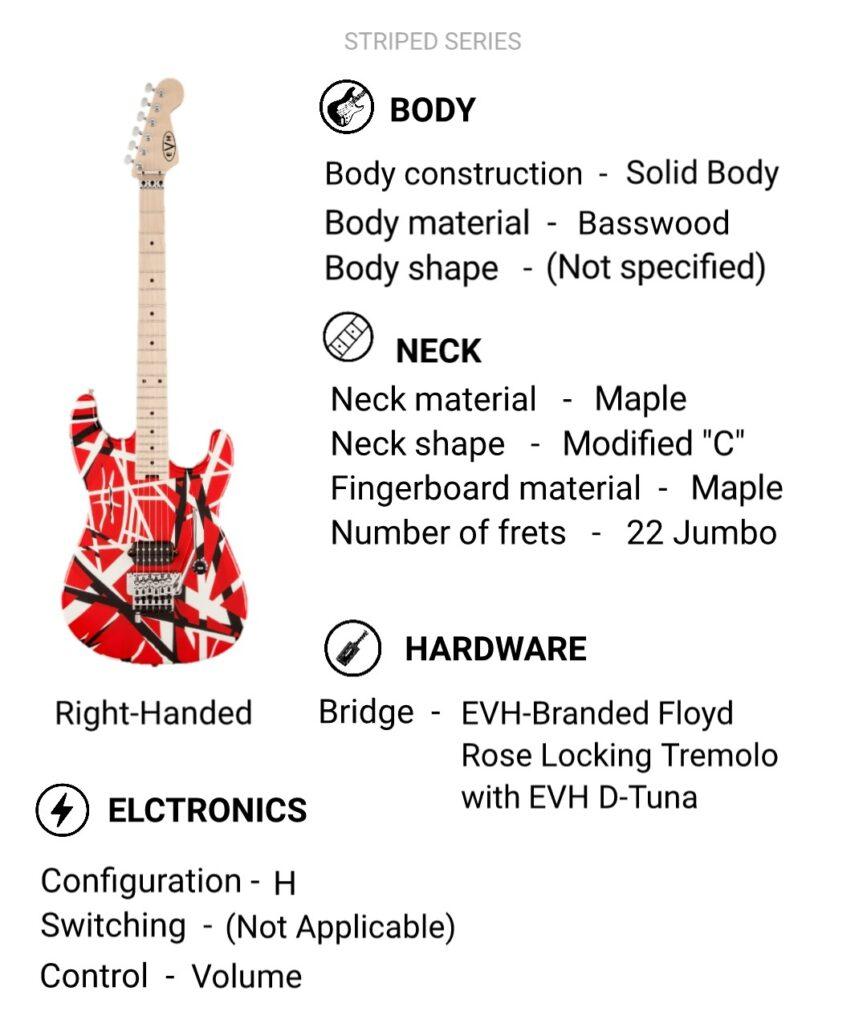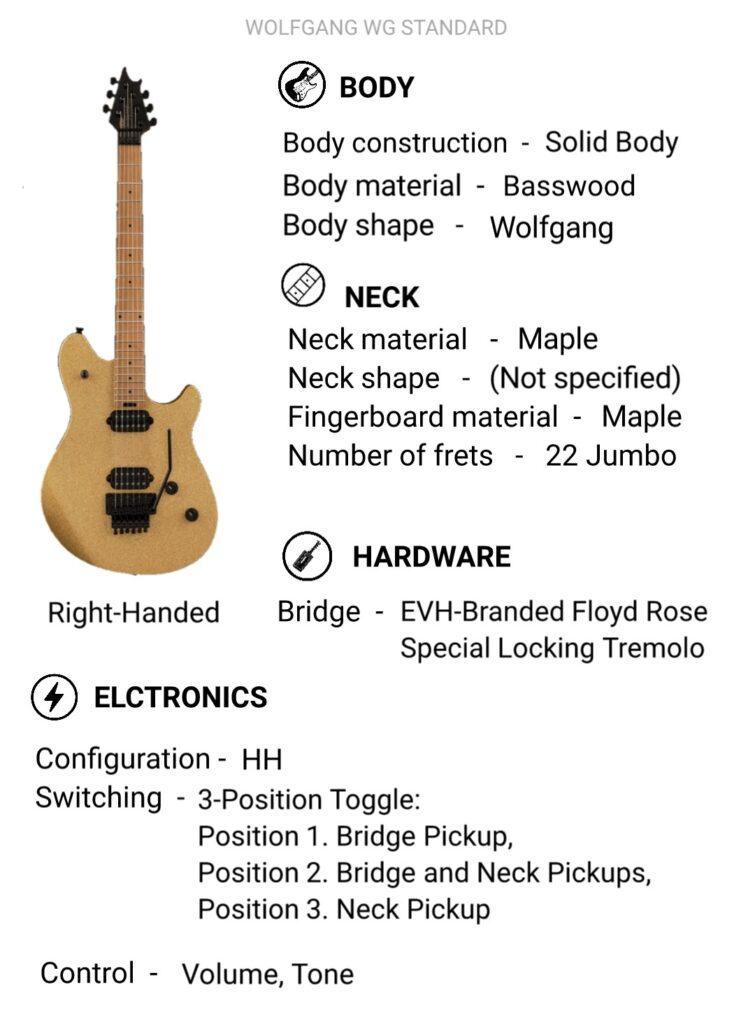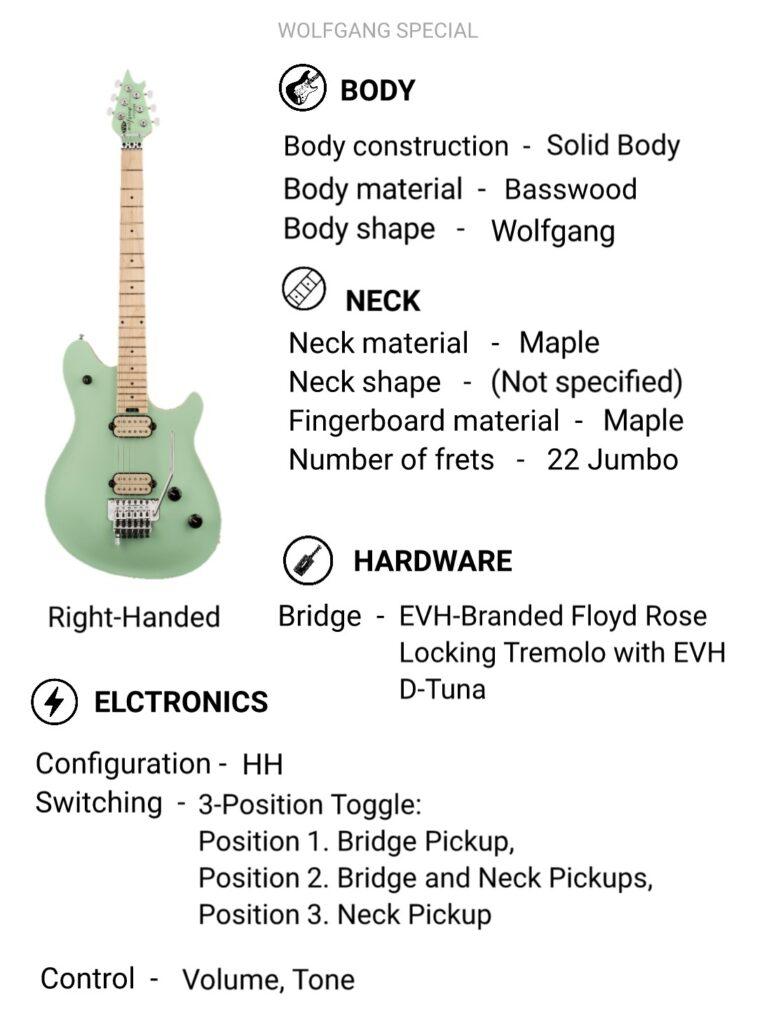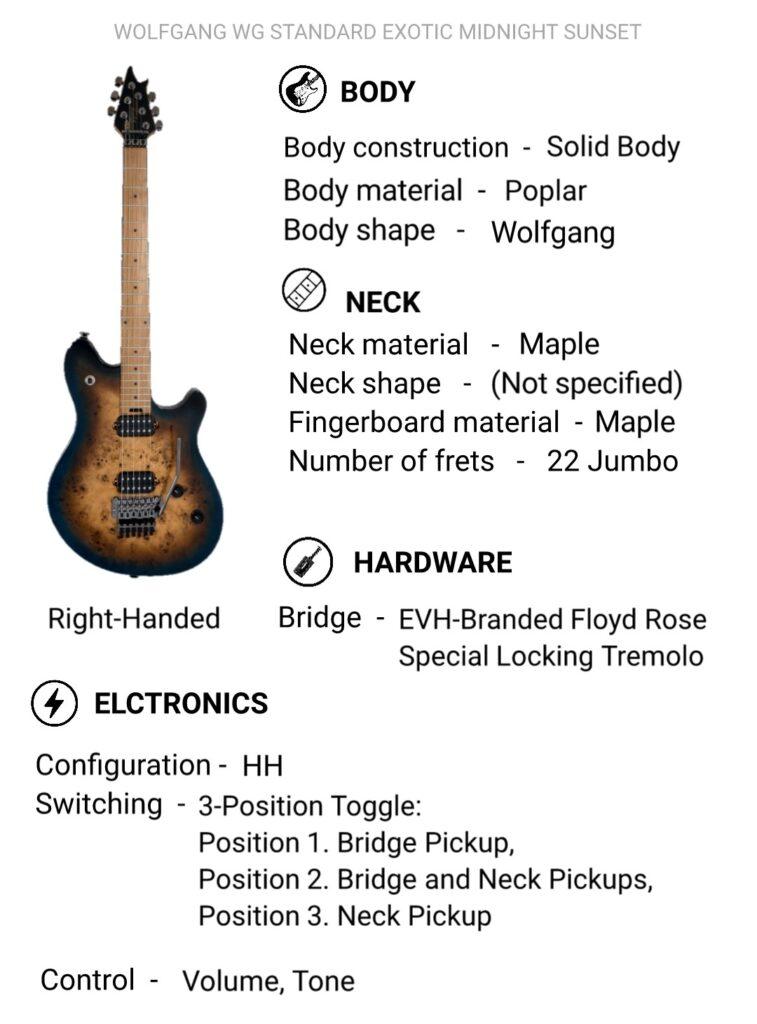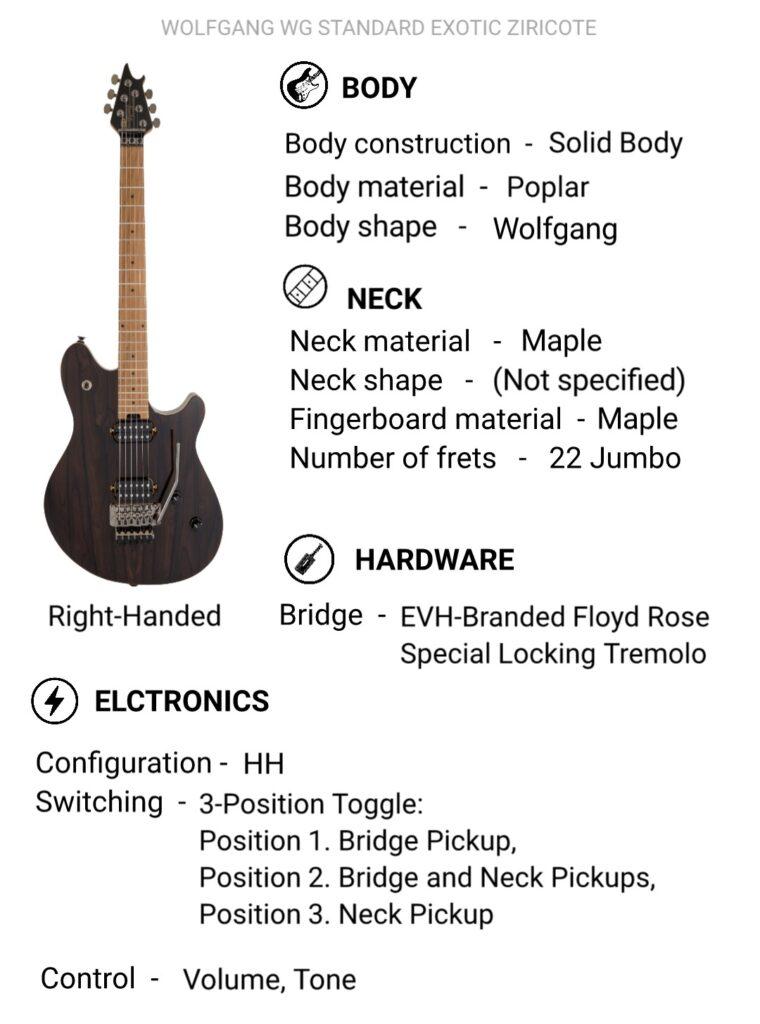Best Hollow body electric guitars with prices, specifications and features from difference online stores at infinicisum.net
PRS SE Hollowbody II Piezo
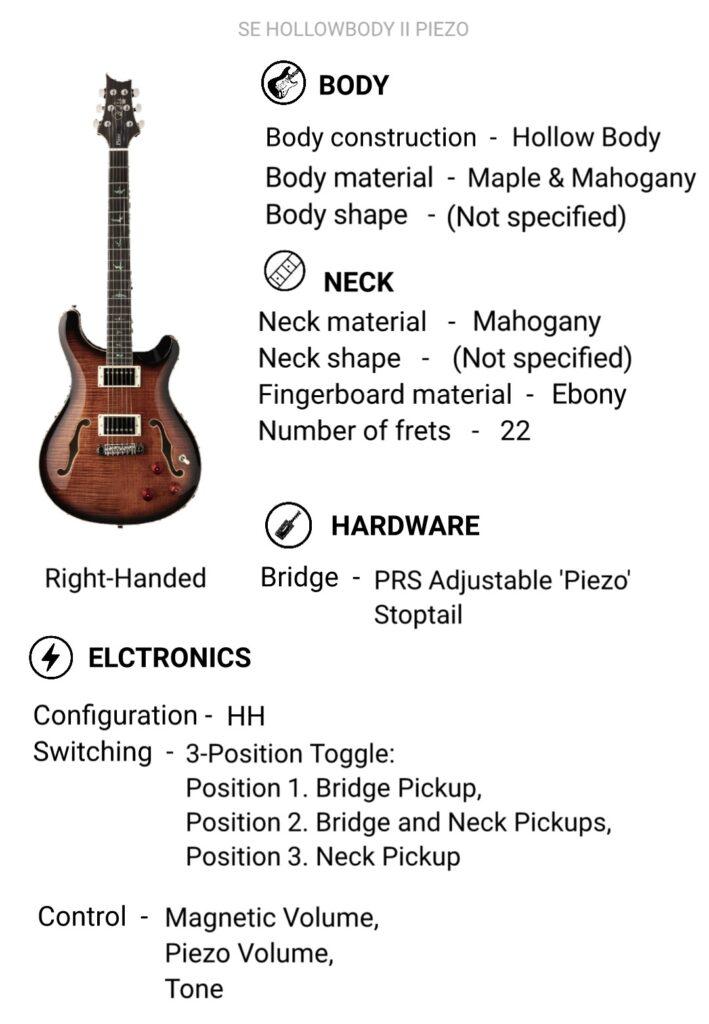
Introduction: Hollow body electric guitars, also known as semi-acoustic guitars, offer a unique blend of acoustic resonance and electric versatility. With their hollow or semi-hollow construction, these instruments produce a rich, warm tone that is distinct from solid-body electric guitars. From jazz and blues to rockabilly and beyond, hollow body guitars have left an indelible mark on the world of music.
”Read_More”
Construction and Design: Hollow body guitars feature a hollow chamber in the body, typically made from laminated or carved wood. This design allows the guitar to resonate like an acoustic instrument, resulting in a more organic and resonant tone. Some hollow body guitars have a center block running through the body to reduce feedback and increase sustain, making them semi-hollow guitars.
Tonal Characteristics: The hollow body design gives these guitars a distinctive sound characterized by warmth, depth, and resonance. They excel in producing clean, lush tones with pronounced midrange and a natural sustain. When played acoustically, hollow body guitars project a rich, full-bodied sound that is perfect for intimate performances or unplugged settings.
Versatility: Despite their association with jazz and blues, hollow body guitars are versatile instruments suitable for a wide range of musical styles. They can handle clean, articulate tones for jazz and pop, as well as gritty, overdriven sounds for blues and rockabilly. Their smooth, rounded tone makes them equally adept at rhythm playing and melodic lead lines.
Playing Considerations: Players should be mindful of feedback when using hollow body guitars at high volumes, especially in live settings. The hollow construction can cause the guitar to resonate sympathetically with loud amplification, leading to unwanted feedback. To mitigate this issue, many players use feedback suppressors or opt for semi-hollow guitars with center blocks.
Conclusion: Hollow body electric guitars offer a timeless blend of acoustic warmth and electric versatility. Whether you’re a jazz aficionado, blues enthusiast, or rock and roll purist, these instruments provide a rich palette of tones and textures to explore. With their elegant designs and soulful sounds, hollow body guitars continue to captivate musicians and audiences alike, leaving an enduring legacy in the world of electric guitar.
For which Genres of music is the Hollow Body electric Guitars are suitable?
Hollow body electric guitars are highly versatile instruments that can excel in various genres of music. Their warm, resonant tone and natural acoustic-like qualities make them particularly well-suited for:
- Jazz: Hollow body guitars are a staple in jazz music due to their smooth, warm tone and excellent articulation. They produce rich, full-bodied sounds that are perfect for chordal comping, melodic improvisation, and smooth jazz solos.
- Blues: Hollow body guitars are revered in the blues genre for their ability to convey emotion and expression. They offer a rich, creamy tone with plenty of sustain, ideal for both traditional blues styles and modern blues-rock.
- Rockabilly: The twangy, percussive sound of hollow body guitars is synonymous with the rockabilly genre. Their natural resonance and bright, cutting tone are perfect for slapback rhythms, energetic leads, and vintage-inspired licks.
- Country: Hollow body guitars can also be found in country music, where their warmth and twang complement the genre’s twangy, melodic style. They deliver a classic country sound that’s perfect for chicken-pickin’ riffs, pedal steel-inspired bends, and country-western ballads.
- Pop and R&B: In pop and R&B music, hollow body guitars add a touch of sophistication and elegance to arrangements. Their warm, rounded tones blend seamlessly with keyboards, horns, and vocal harmonies, providing a lush backdrop for catchy melodies and soulful grooves.
- Folk and Americana: Hollow body guitars can lend an earthy, organic quality to folk and Americana music. Their acoustic-like resonance and warmth complement acoustic instruments such as banjos, fiddles, and mandolins, adding depth and texture to rootsy arrangements.
In essence, the hollow body electric guitar’s versatility allows it to adapt to a wide range of musical styles, making it a favorite among discerning musicians seeking expressive tone and timeless appeal.
How to choose right Hollow body electric Guitar
Choosing the right hollow body electric guitar requires careful consideration of several factors to ensure it fits your playing style, preferences, and budget. Here’s a guide to help you make an informed decision:
- Playability: Test the guitar’s playability by assessing factors such as neck profile, fretboard radius, and overall feel. Ensure it is comfortable to hold and allows for easy access to all frets.
- Tone: Hollow body guitars offer a unique and versatile range of tones. Consider the type of music you play and the sound you want to achieve. Experiment with different models to find one that produces the desired tone for your genre.
- Body Size and Weight: Hollow body guitars come in various sizes and weights. Consider the physical dimensions of the guitar and how comfortable it is to play, especially if you’ll be performing for extended periods.
- Construction Quality: Examine the craftsmanship and build quality of the guitar, including the materials used for the top, back, and sides. High-quality woods and meticulous construction can significantly impact tone and durability.
- Pickups: Decide whether you prefer models with traditional hollow body pickups, humbuckers, single-coils, or a combination. Each type of pickup offers a distinct sound, so choose one that complements your playing style and musical preferences.
- Feedback Resistance: Hollow body guitars are susceptible to feedback at high volumes. Look for models with features such as feedback-resistant designs or built-in feedback suppression systems if you plan to play at loud volumes or in amplified settings.
- Budget: Set a realistic budget based on your financial constraints and the level of quality you desire. Remember that higher-priced guitars often offer better construction, tone, and features, but there are also quality options available at lower price points.
- Brand Reputation: Research the reputation of different guitar brands and models. Established brands with a history of producing quality instruments may offer more reliable options, but newer brands can also provide innovative designs and features.
- Reviews and Recommendations: Read reviews from other players and seek recommendations from experienced musicians or guitar instructors. Their insights can provide valuable information about the pros and cons of specific models.
- Try Before You Buy: Whenever possible, play the guitar in person before making a purchase. Pay attention to how it feels and sounds, and consider factors such as comfort, balance, and resonance.
By considering these factors and taking the time to explore different options, you can choose a hollow body electric guitar that suits your musical needs and inspires you to create and perform at your best.
Pros and Cons hollow body electric Guitars
Hollow body electric guitars offer a unique blend of acoustic resonance and electric versatility, but they also come with their own set of advantages and disadvantages. Here are some pros and cons to consider:
Pros:
- Warm, Resonant Tone: Hollow body guitars produce a warm, rich tone with excellent sustain and natural resonance, making them well-suited for jazz, blues, rockabilly, and other genres where a smooth, mellow sound is desired.
- Versatility: Despite their traditional association with jazz and blues, hollow body guitars can cover a wide range of musical styles. They can produce clean, articulate tones suitable for rhythm playing, as well as overdriven tones for lead guitar work.
- Acoustic-Like Qualities: Due to their hollow construction, these guitars can be played unplugged and still produce a noticeable sound, making them suitable for practice sessions or intimate performances without amplification.
- Aesthetic Appeal: Hollow body guitars often feature elegant designs, intricate finishes, and vintage-inspired aesthetics that appeal to many players. They exude a classic charm that adds to their allure on stage or in the studio.
- Feedback Resistance: Some hollow body guitars are equipped with feedback-suppressing features or designs that mitigate unwanted feedback at high volumes, allowing players to achieve loud, expressive tones without sacrificing control.
Cons:
- Susceptibility to Feedback: The hollow body design can make these guitars prone to feedback, especially when played at high volumes or with excessive gain. This can limit their suitability for certain live performance settings or aggressive playing styles.
- Size and Weight: Hollow body guitars tend to be larger and heavier than solid-body counterparts, which may be less comfortable for some players, especially during extended playing sessions or performances.
- Sustain and Overtones: While hollow body guitars offer excellent sustain and resonance, they can also produce unwanted overtones and harmonics, particularly when played at high volumes or with heavy distortion. This may require players to adjust their playing technique or use EQ settings to tame unwanted frequencies.
- Price: High-quality hollow body guitars often come with a higher price tag compared to solid-body models, reflecting the craftsmanship, materials, and design elements involved in their construction. This can make them less accessible to budget-conscious players.
- Feedback Issues: Some hollow body guitars may experience feedback issues due to their design, particularly when played at high volumes or in amplified settings. This can be mitigated with proper technique, feedback suppression systems, or by choosing models with feedback-resistant features.
Overall, hollow body electric guitars offer a unique blend of vintage charm, acoustic-like qualities, and electric versatility that appeals to a wide range of players. While they may present challenges such as feedback and size, their rich tone and aesthetic appeal make them a popular choice for many musicians.
Hollow body Vs Semi-hollow body electric guitars
Hollow body and semi-hollow body electric guitars are two distinct types of instruments, each with its own unique characteristics and advantages. Here’s a comparison of the two:
Hollow Body Electric Guitars:
- Fully Hollow Construction: Hollow body guitars have a completely hollow body, with no solid center block. This design maximizes acoustic resonance, resulting in a rich, warm tone with excellent sustain.
- Larger Body Size: Hollow body guitars typically have larger bodies compared to semi-hollow guitars, which can contribute to their full, robust sound.
- Greater Susceptibility to Feedback: Due to their fully hollow construction, hollow body guitars are more prone to feedback, especially at higher volumes or when used with high-gain amplification.
- Ideal for Jazz and Blues: The warm, mellow tone of hollow body guitars makes them well-suited for jazz, blues, and other genres that require smooth, articulate playing.
- Vintage Aesthetic: Many hollow body guitars feature classic designs and aesthetic elements, such as f-holes and elegant finishes, which evoke a vintage vibe.
Semi-Hollow Body Electric Guitars:
- Semi-Hollow Construction: Semi-hollow guitars feature a combination of hollow and solid body elements, with a solid center block running through the body. This design reduces feedback while still providing some acoustic resonance.
- Versatility: Semi-hollow guitars offer a balance between the warm, resonant tone of hollow body guitars and the reduced feedback of solid-body guitars. They’re versatile instruments suitable for a wide range of musical styles, from jazz and blues to rock, indie, and beyond.
- Reduced Feedback: The presence of a solid center block helps to minimize feedback issues, making semi-hollow guitars more suitable for higher-volume playing and live performances.
- Comfortable Playability: Semi-hollow guitars are often lighter and more comfortable to play than fully hollow instruments, thanks to their reduced weight and ergonomic design.
- Wider Range of Tonal Options: Many semi-hollow guitars come equipped with multiple pickups and tone controls, offering players a broader range of tonal possibilities to explore.
In summary, the choice between hollow body and semi-hollow body electric guitars ultimately comes down to personal preference and the specific requirements of the player. Hollow body guitars excel in producing warm, resonant tones ideal for jazz and blues, while semi-hollow guitars offer greater versatility and reduced feedback, making them suitable for a wider range of musical genres and playing styles.
History of hollow body electric Guitars
The history of hollow body electric guitars traces back to the early 20th century when amplified instruments started gaining popularity in jazz and swing bands. Here’s a brief overview of their evolution:
1920s-1930s: Early Beginnings
- The first attempts at creating electric guitars involved adding electromagnetic pickups to acoustic guitars to amplify their sound.
- Companies like Rickenbacker, Gibson, and Epiphone experimented with different designs, including fully hollow instruments and semi-hollow designs with a center block for stability and reduced feedback.
- The Gibson L-5 and ES-150 are among the earliest examples of commercially successful hollow body electric guitars, introduced in the 1920s and 1930s, respectively.
1940s-1950s: Jazz and Big Band Era
- Hollow body electric guitars gained popularity in jazz and big band music during the 1940s and 1950s.
- Gibson’s ES series, including models like the ES-175 and ES-335, became iconic instruments favored by jazz guitarists for their warm, mellow tone and feedback-resistant design.
- The archtop design, characterized by a curved, arched top and back, became synonymous with hollow body guitars during this period.
1960s: Rock ‘n’ Roll and Beyond
- In the 1960s, hollow body guitars found their way into other genres, including rock ‘n’ roll, blues, and country.
- Artists like Chuck Berry, B.B. King, and Freddie King popularized the use of hollow body guitars in rock and blues music, showcasing their versatility and expressive potential.
- Gibson’s ES-335 and ES-345 gained popularity among rock guitarists for their ability to produce both clean and distorted tones.
- Other manufacturers, such as Gretsch and Guild, also produced notable hollow body models like the Gretsch Country Gentleman and Guild Starfire series.
1970s-Present: Continued Innovation
- In the following decades, hollow body electric guitars continued to evolve with advancements in electronics, construction techniques, and design aesthetics.
- Manufacturers introduced new models and variations to meet the demands of modern players, including thinline and chambered designs for improved comfort and reduced weight.
- Artists across various genres continued to embrace hollow body guitars for their unique tonal characteristics, vintage appeal, and stage presence.
Today, hollow body electric guitars remain an essential part of the musical landscape, appreciated for their rich, warm tone, resonance, and timeless design. They continue to inspire players across genres, from jazz and blues to rock, indie, and beyond.
”Read_Less”

